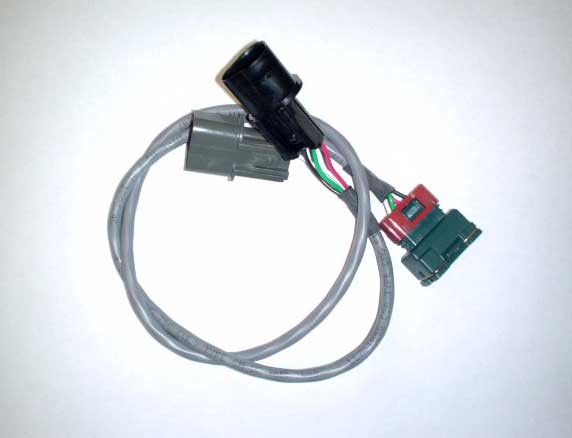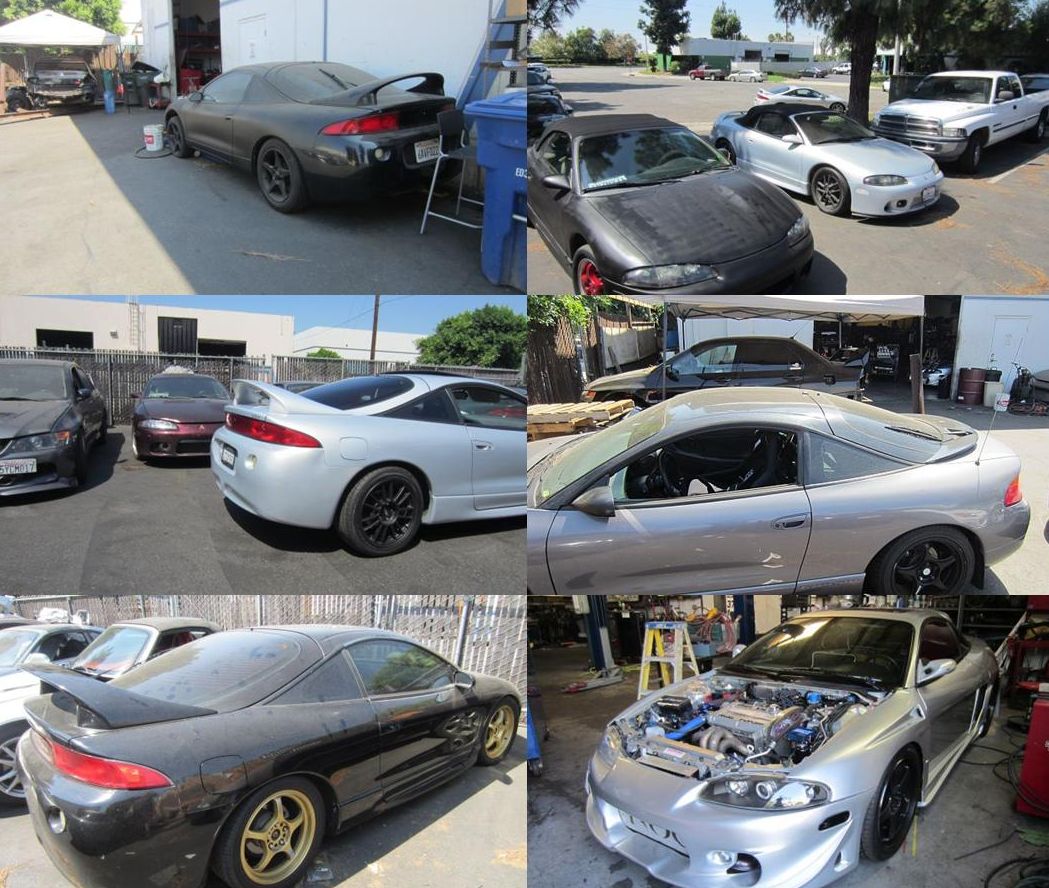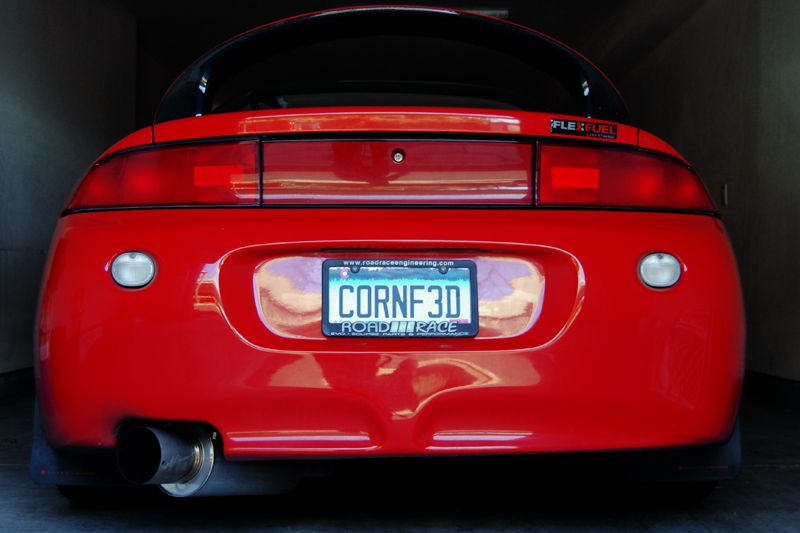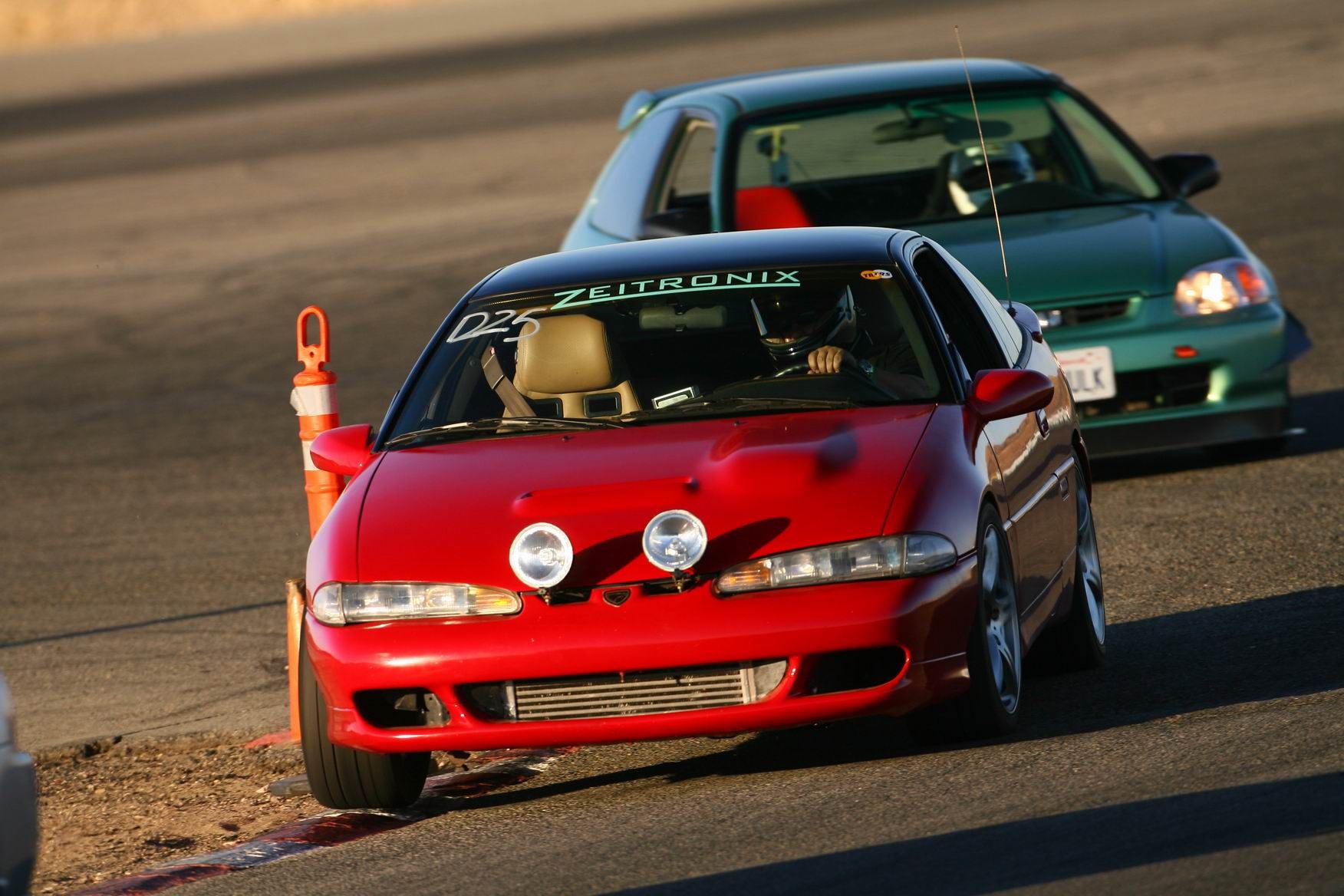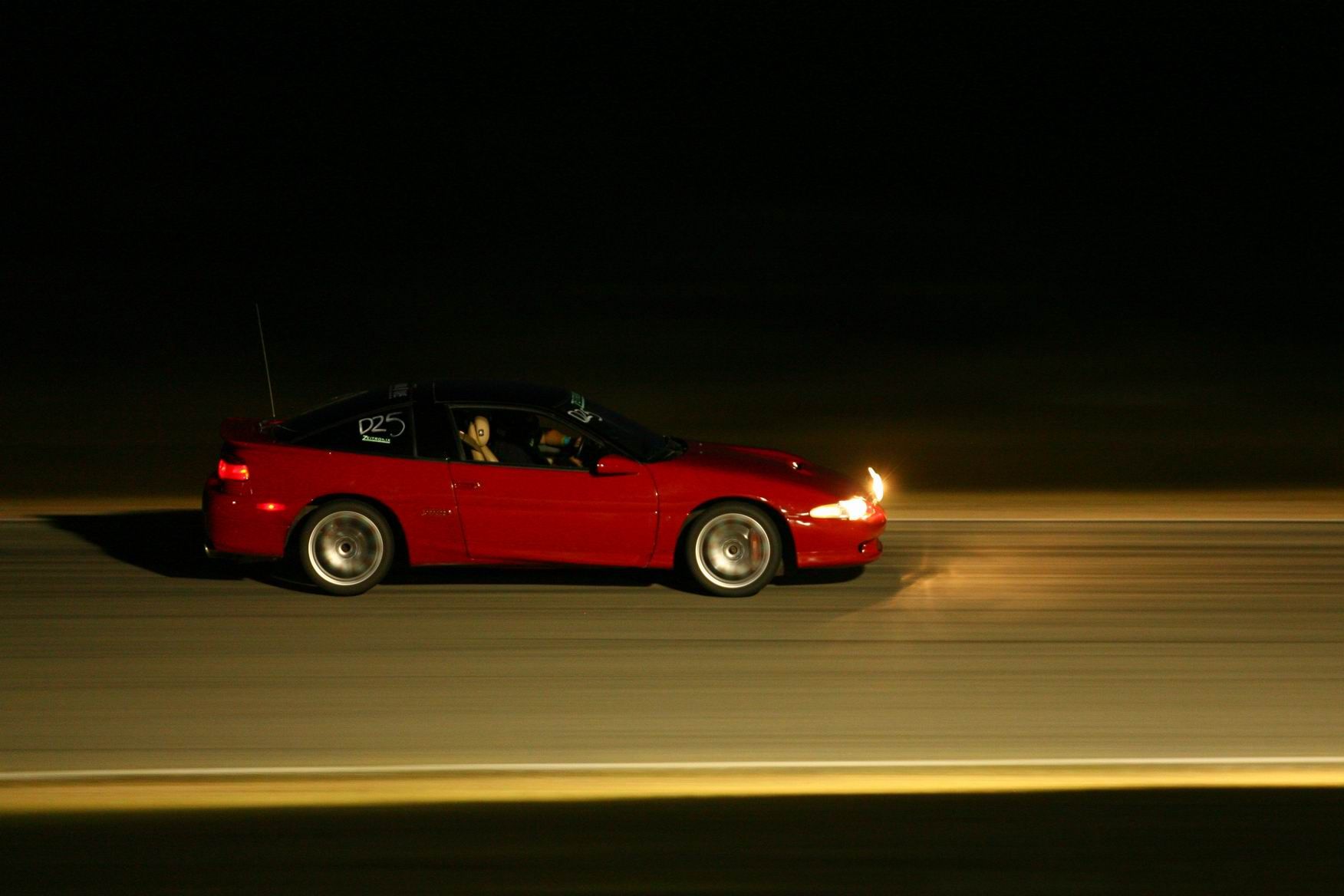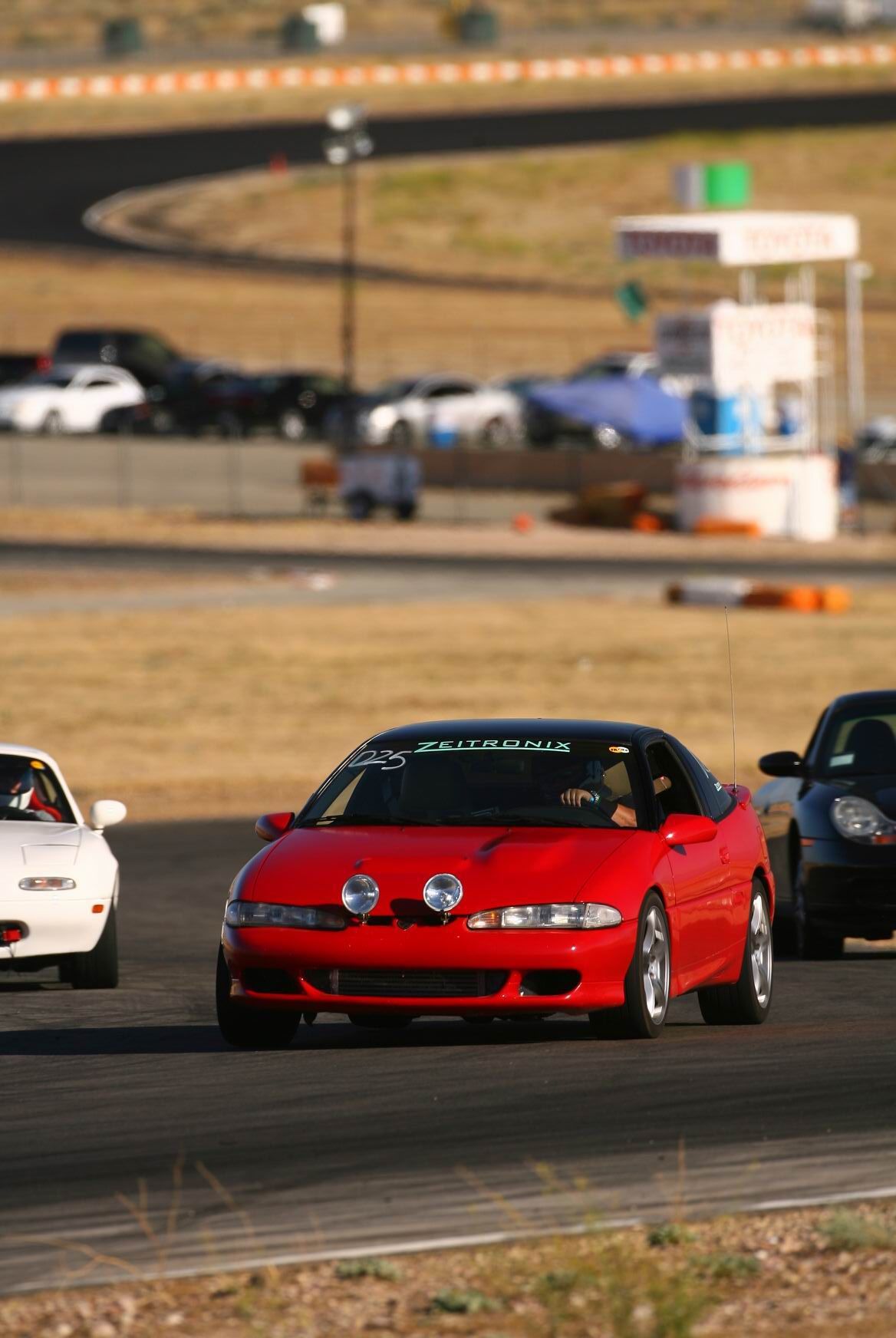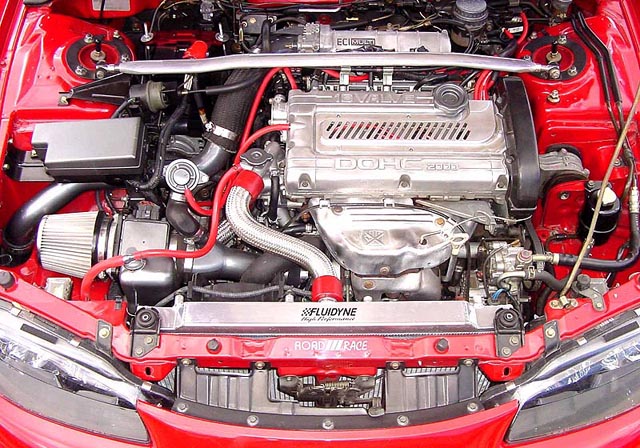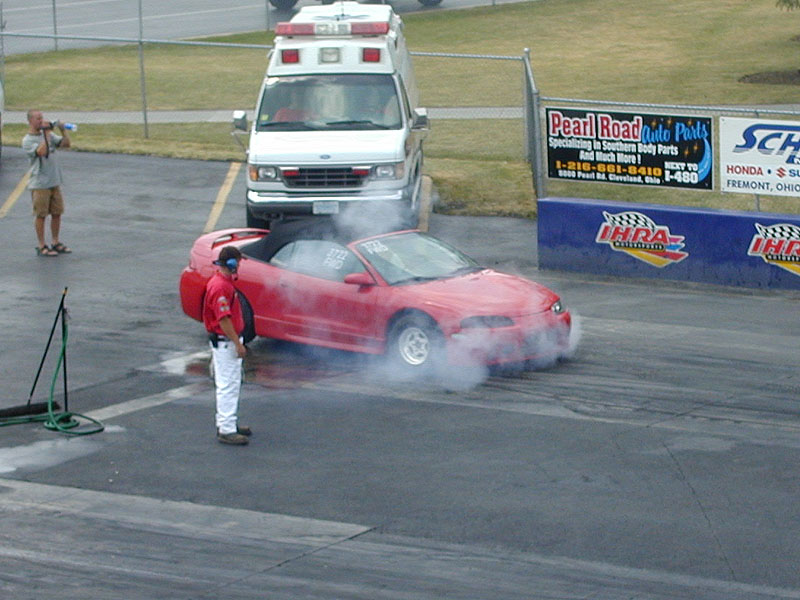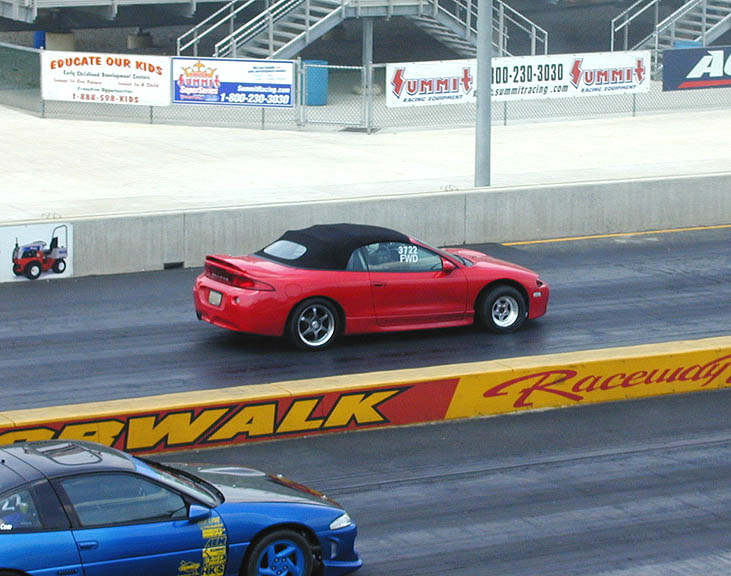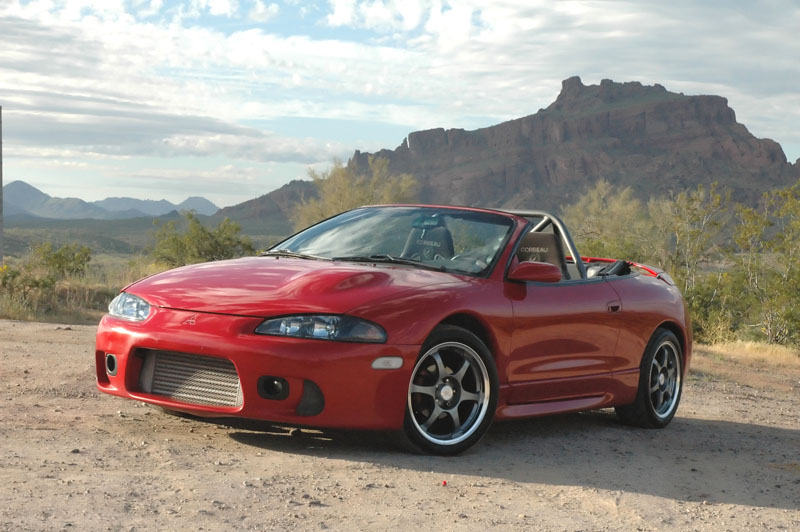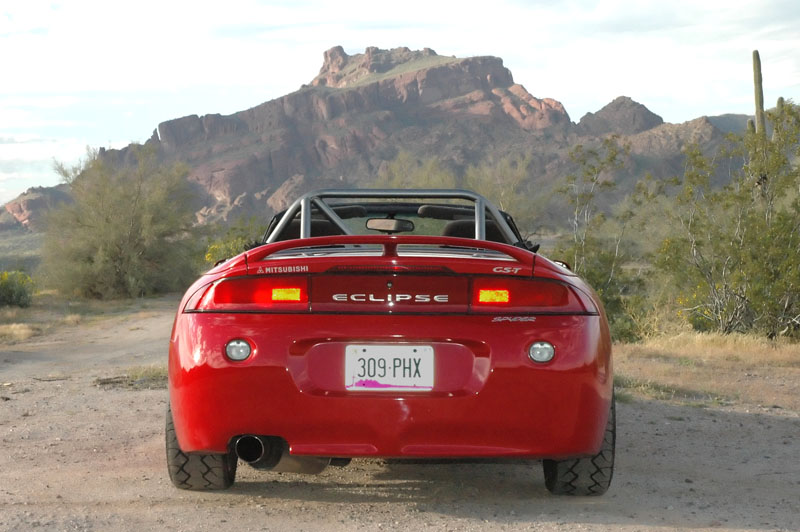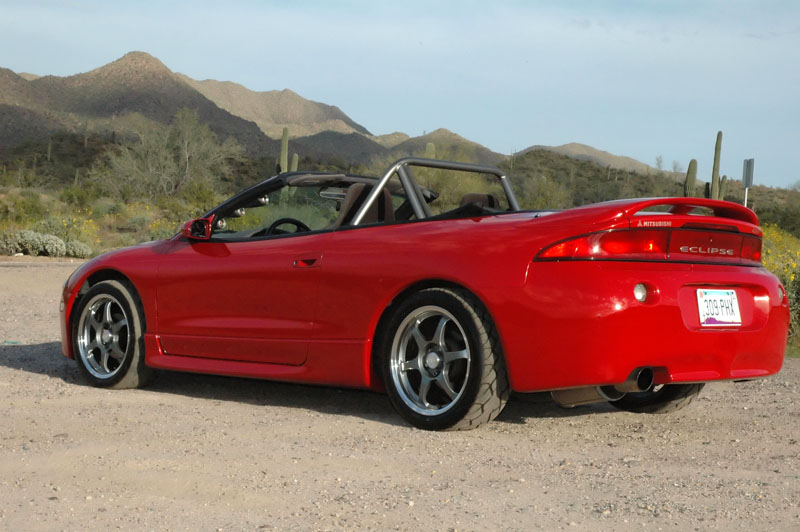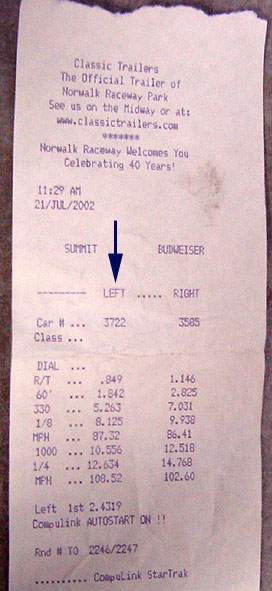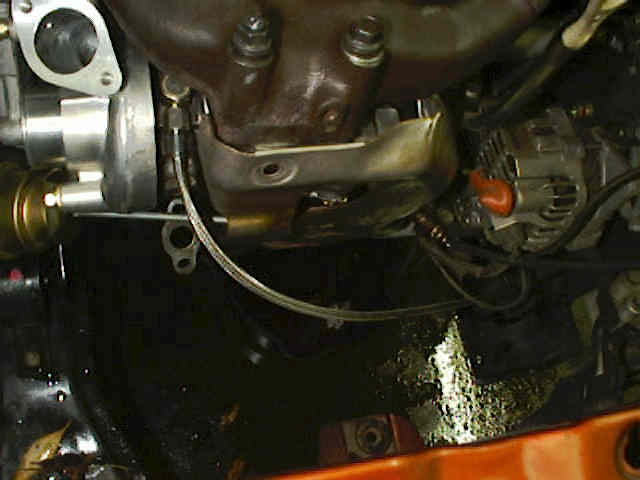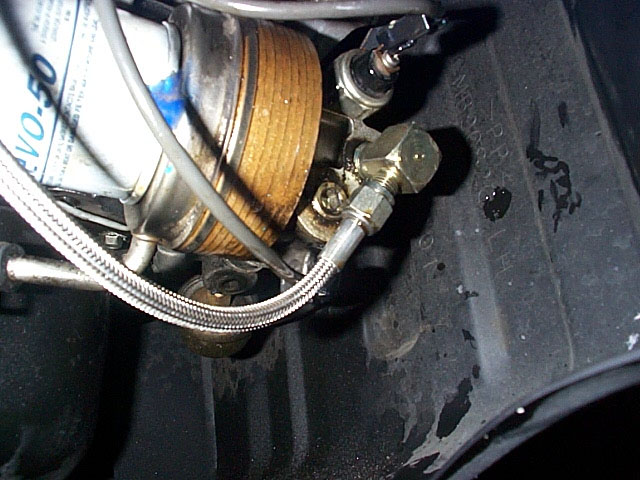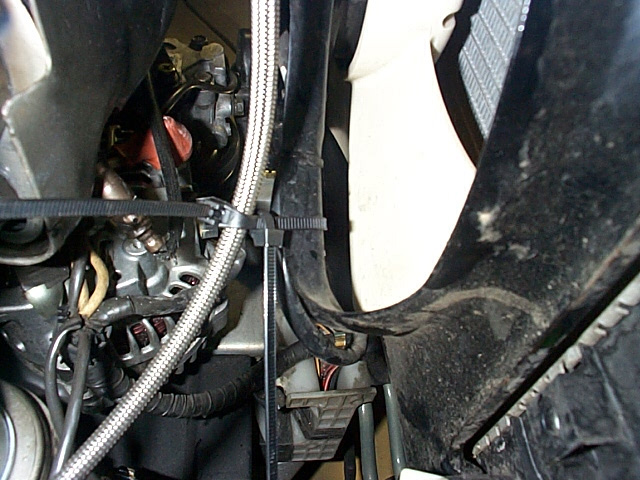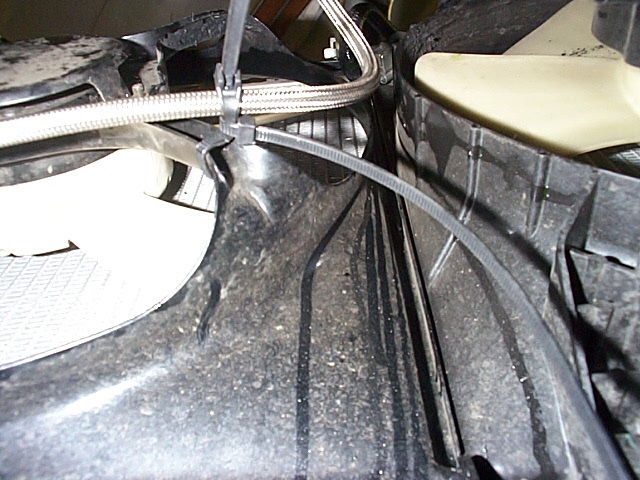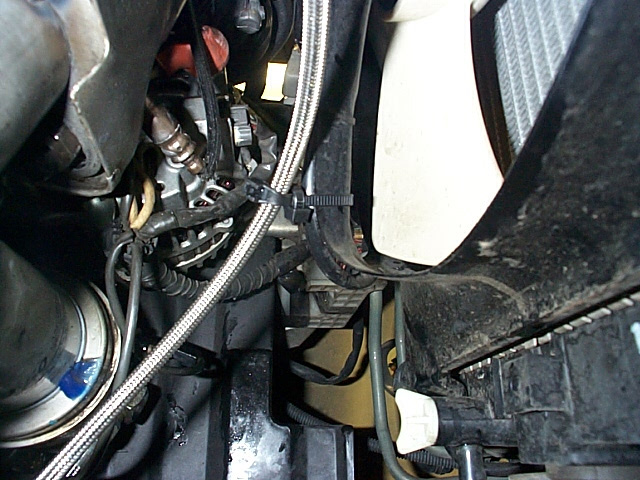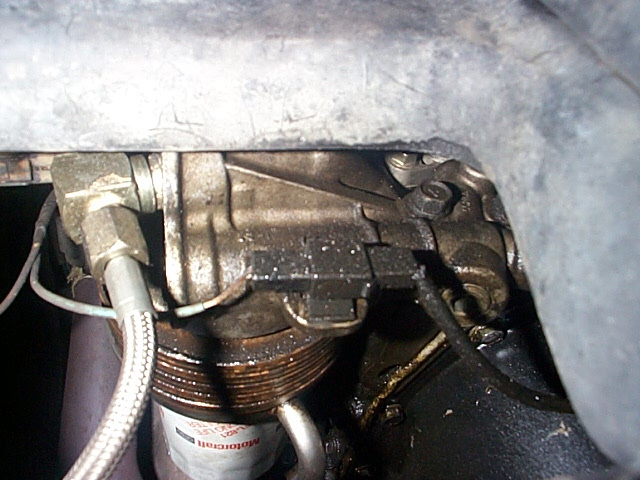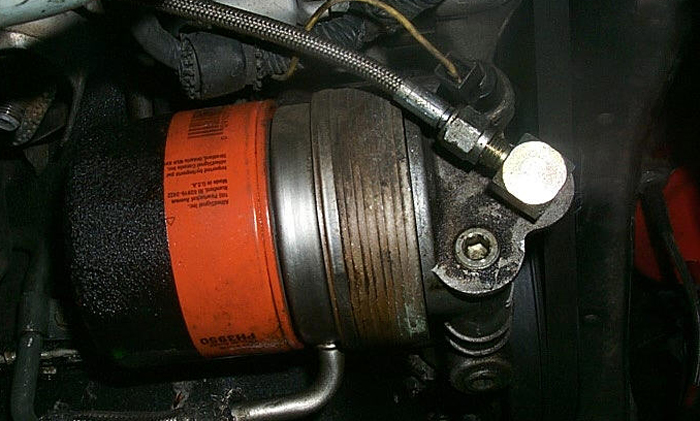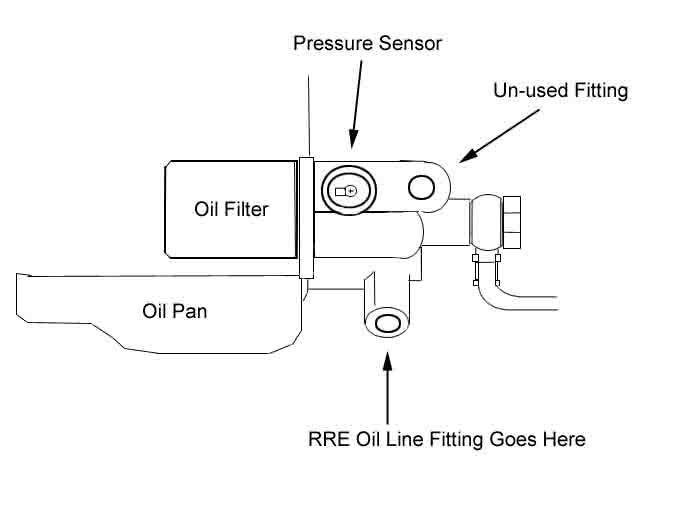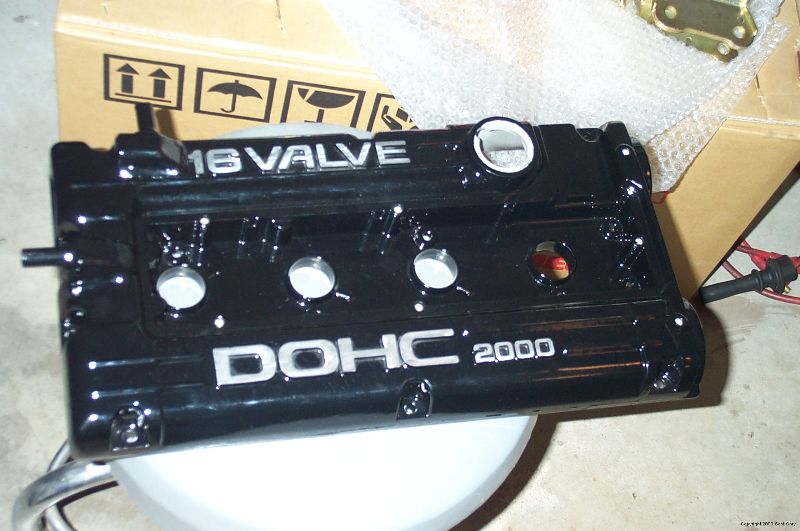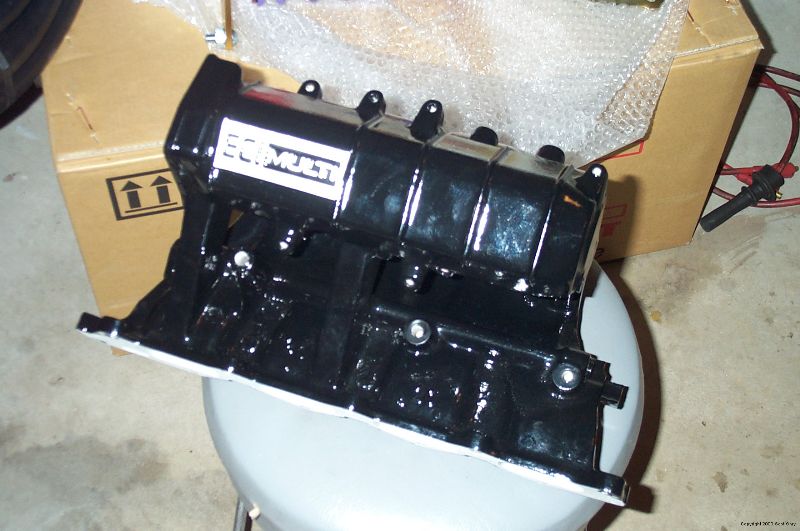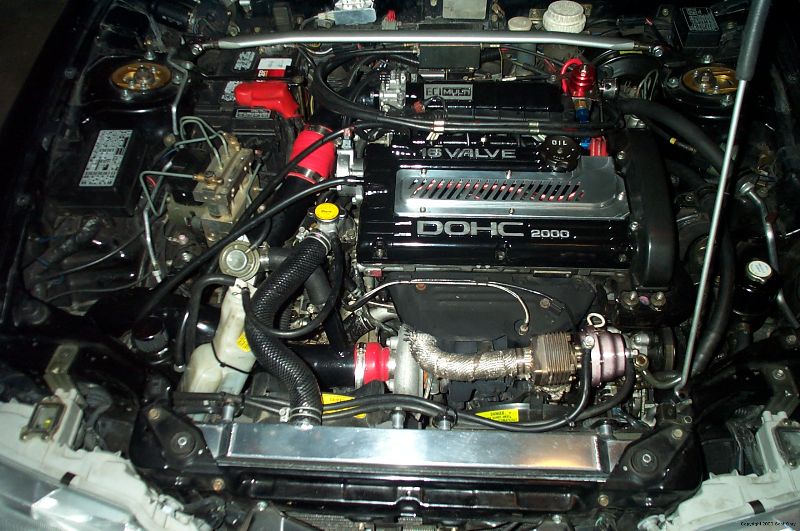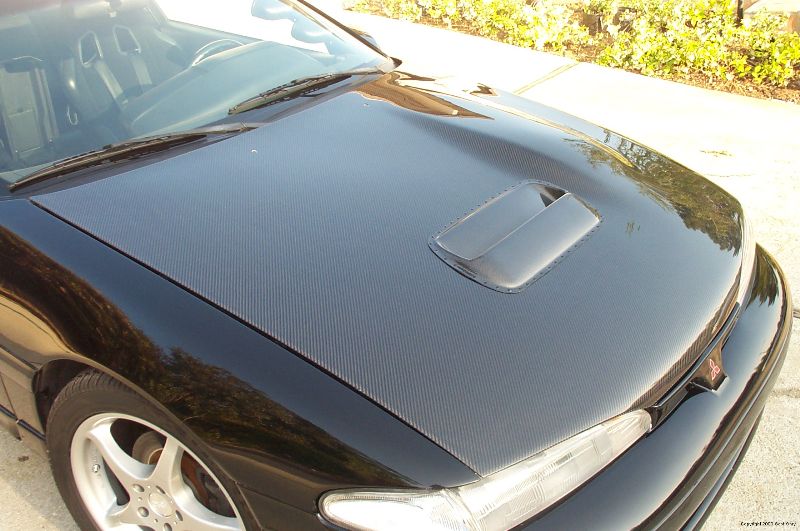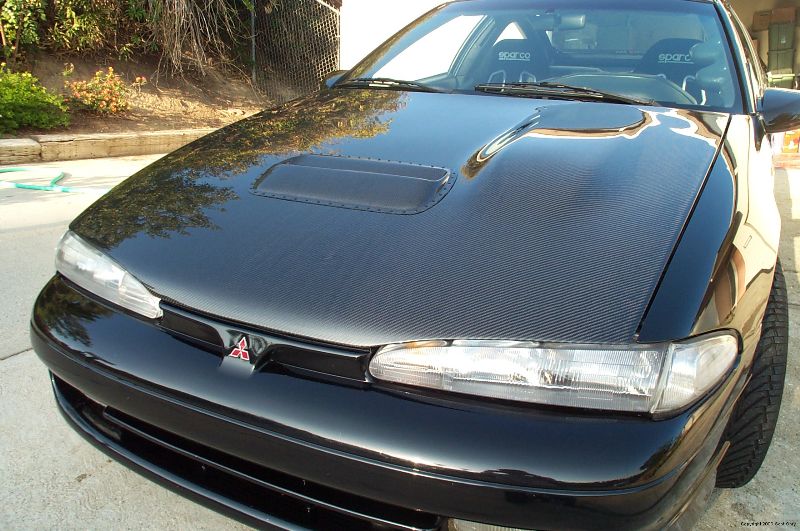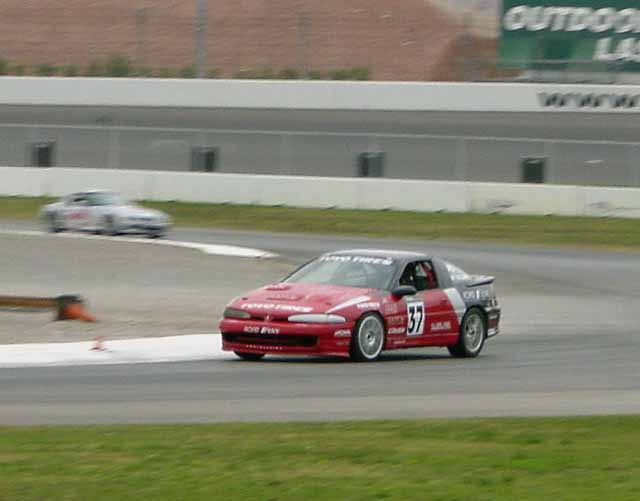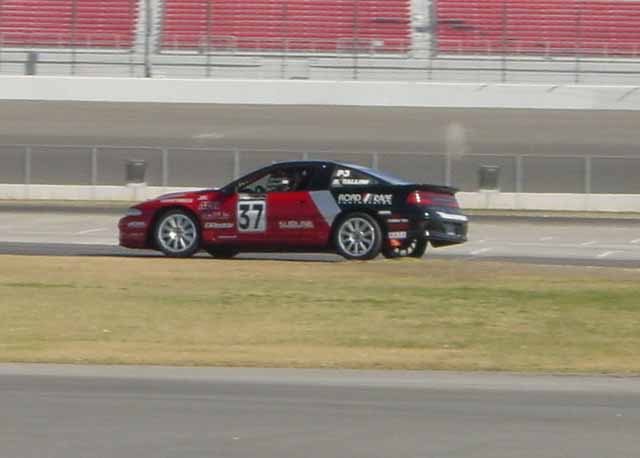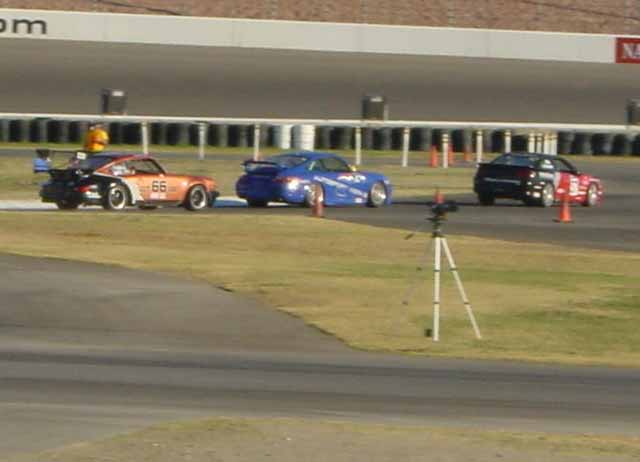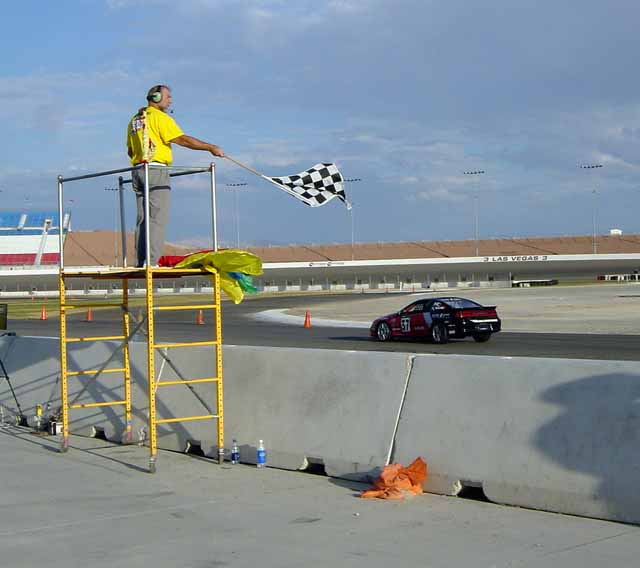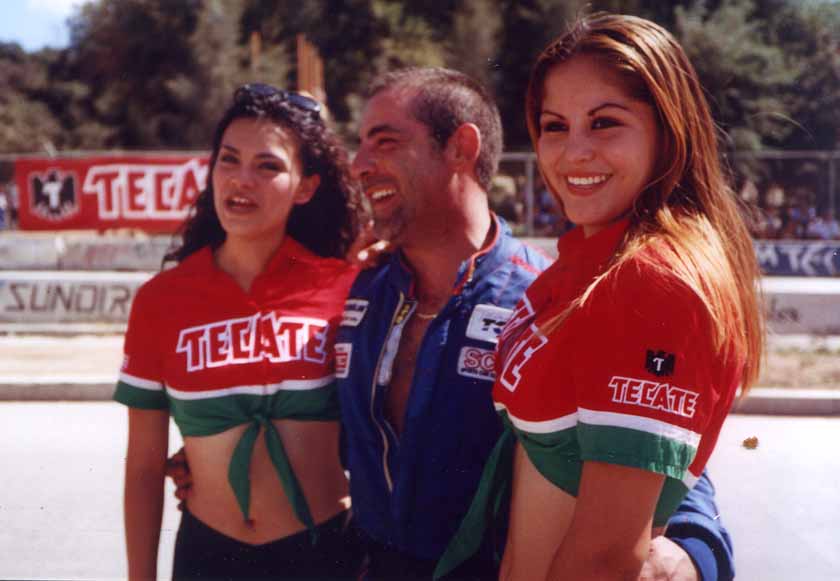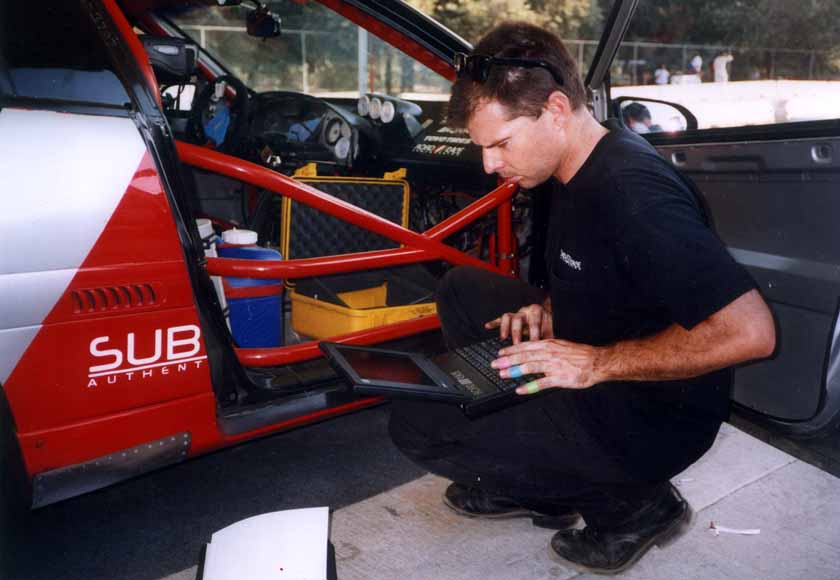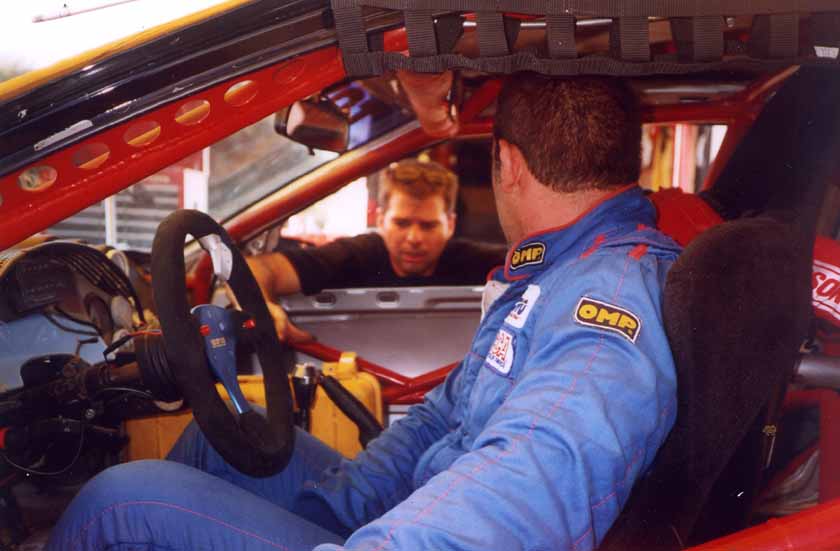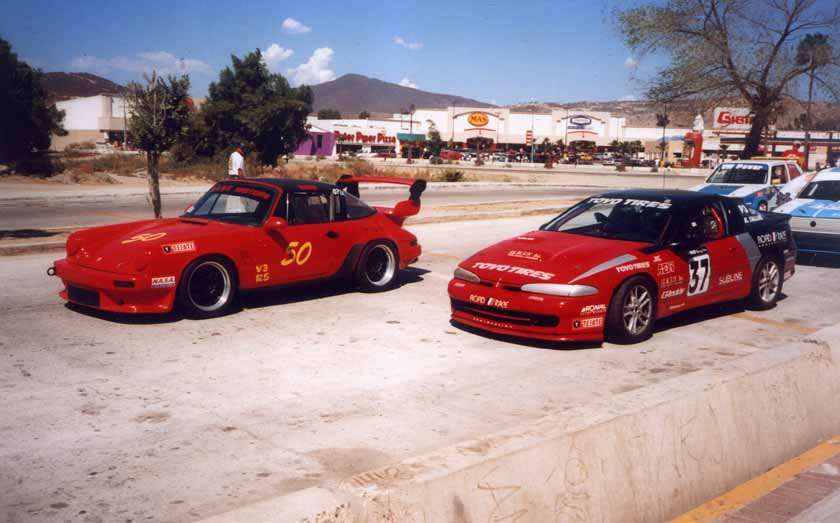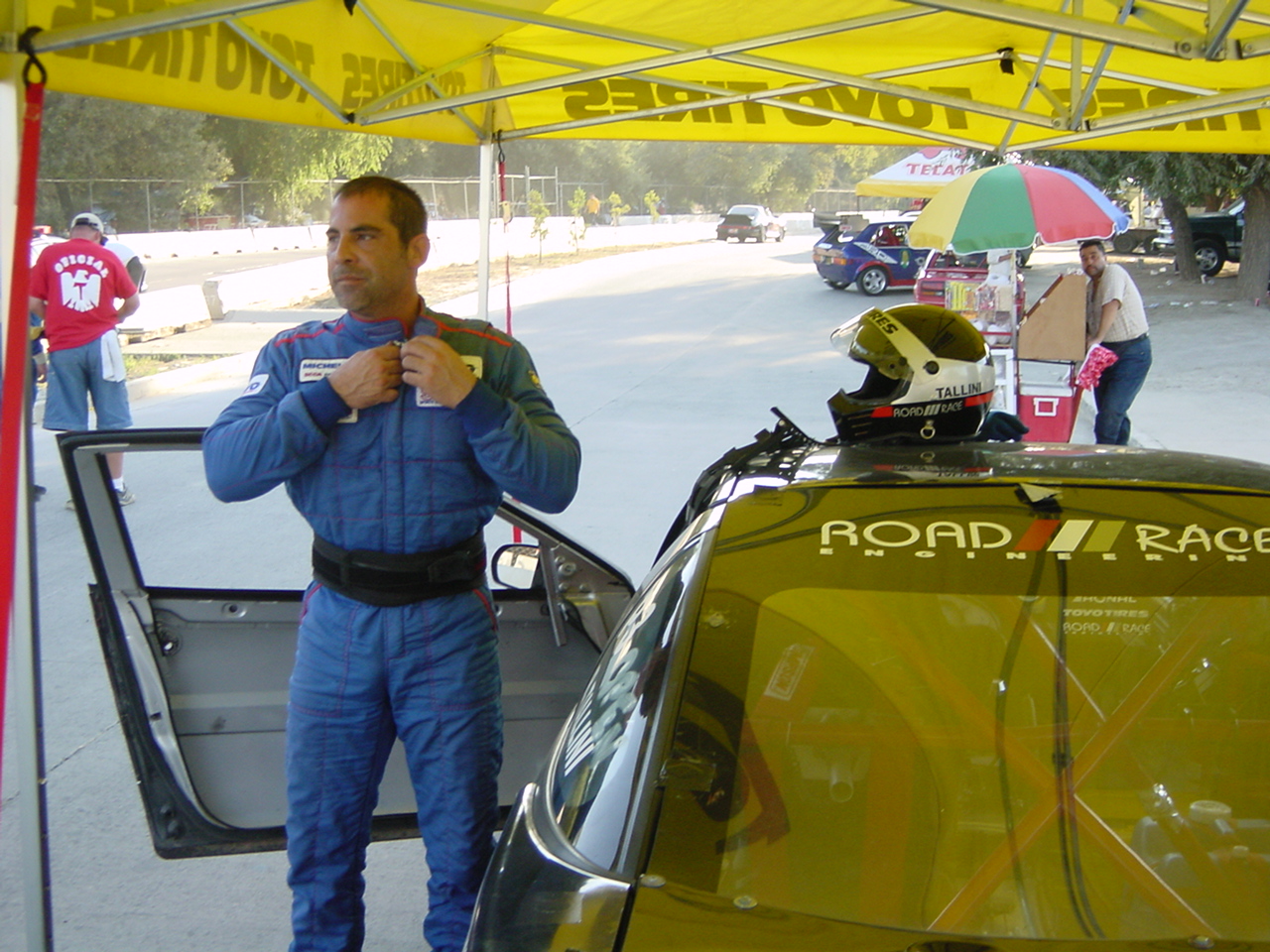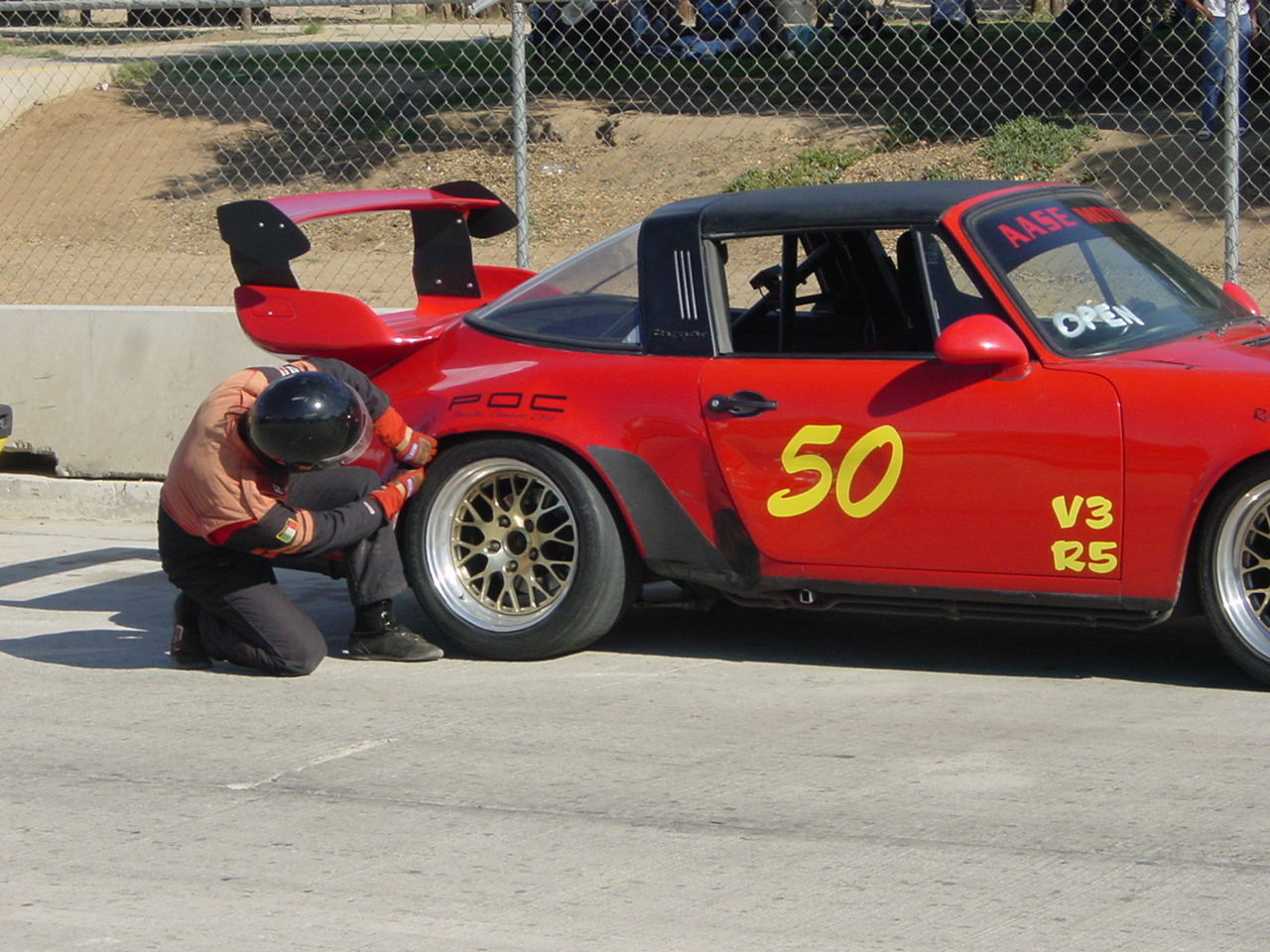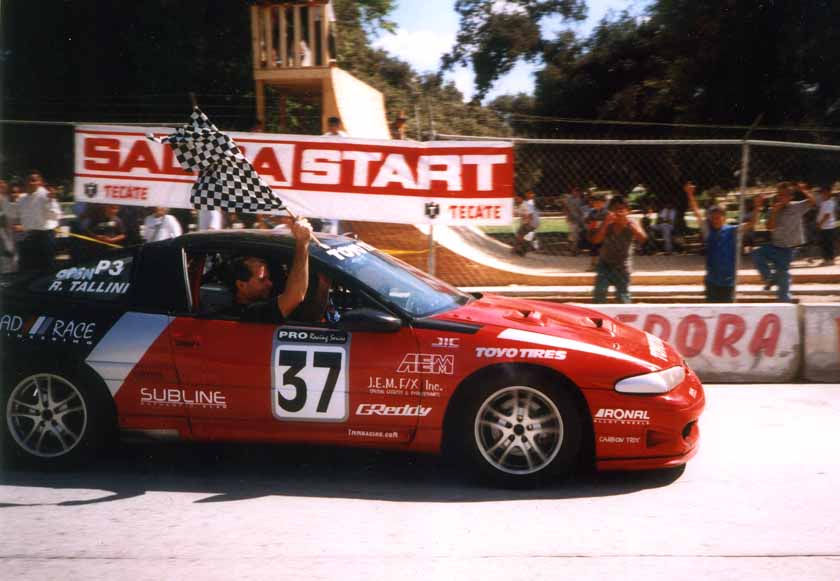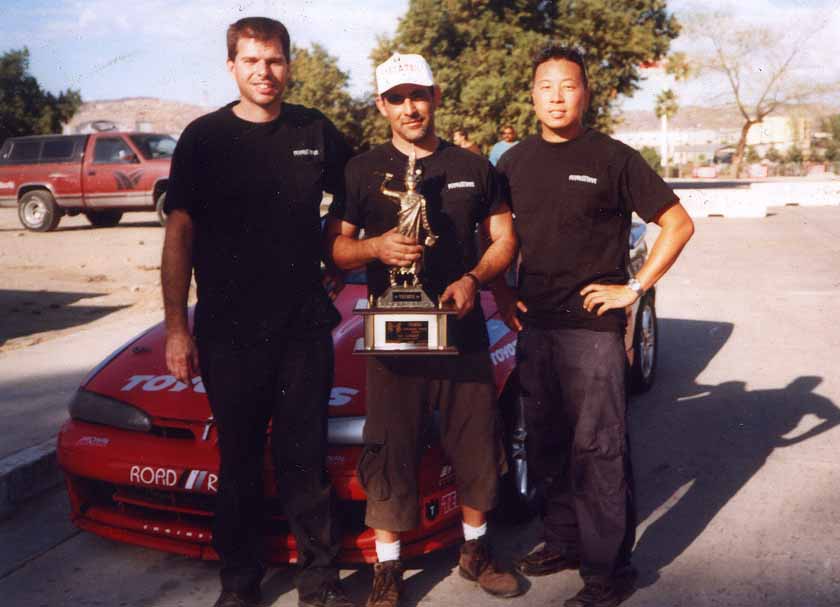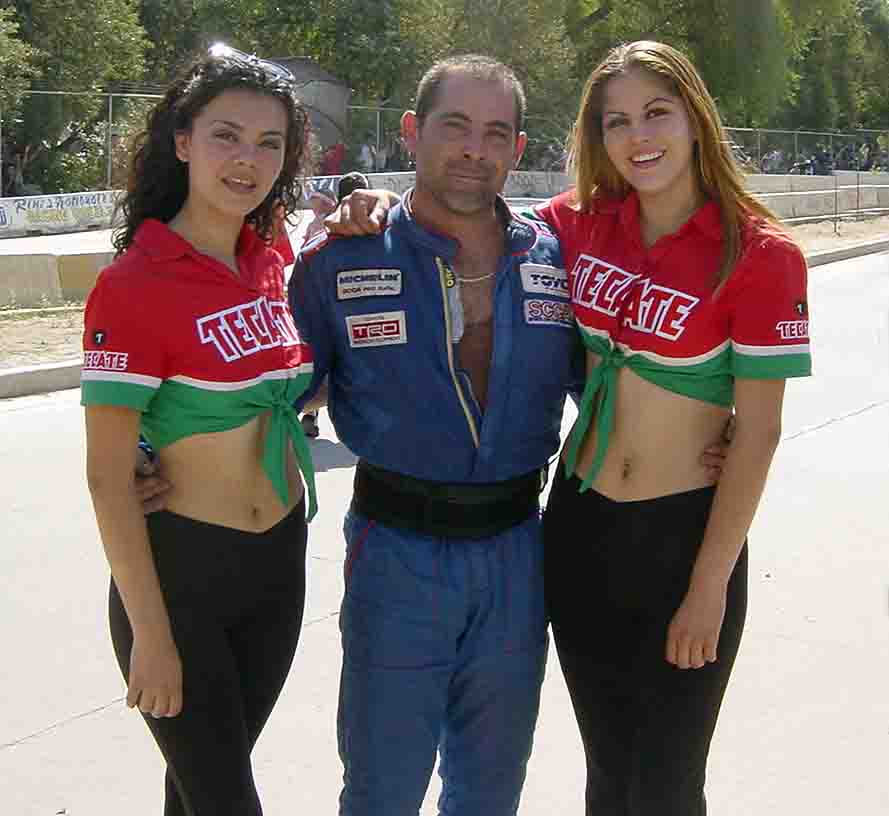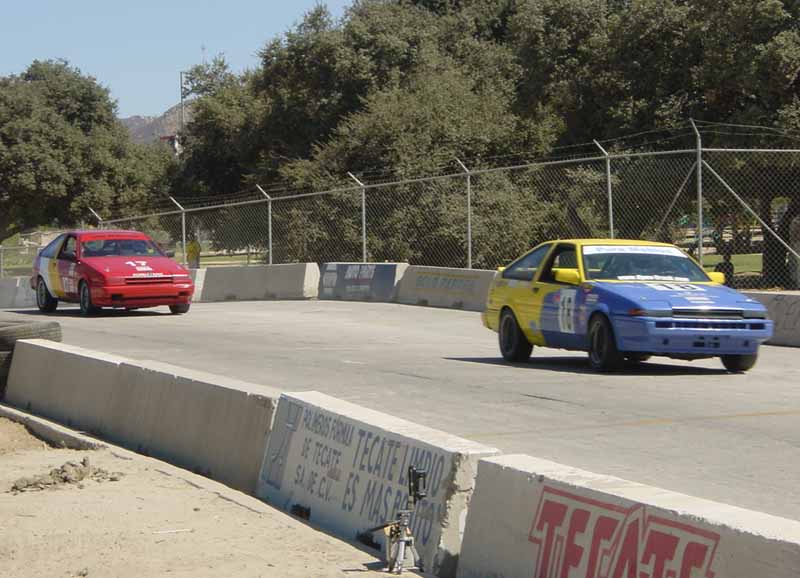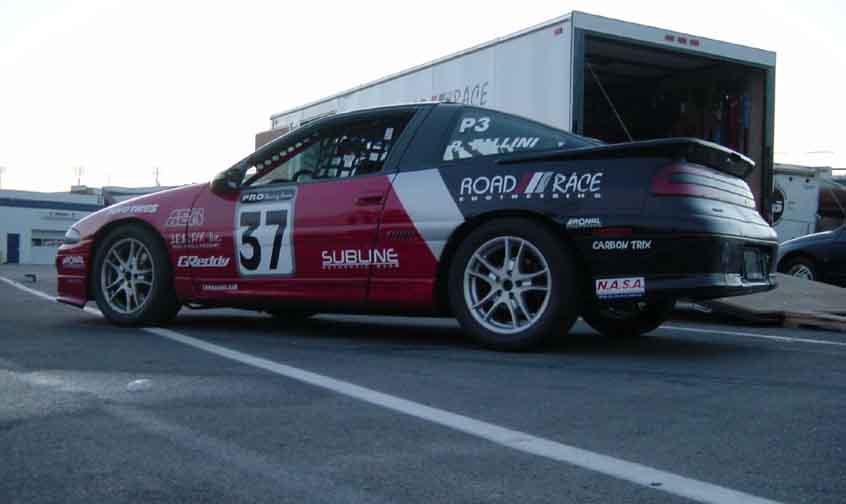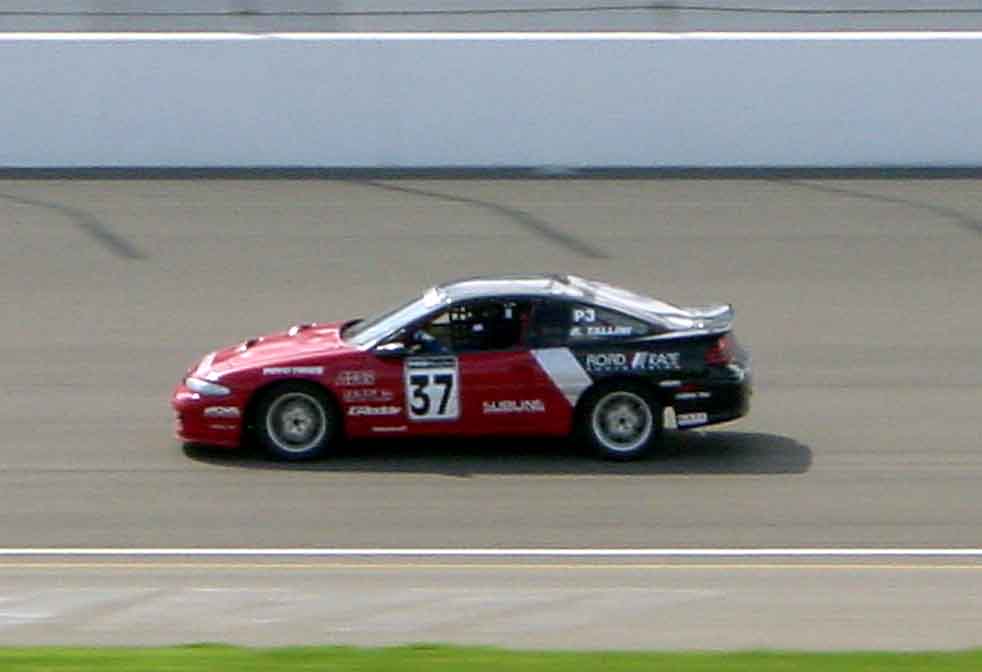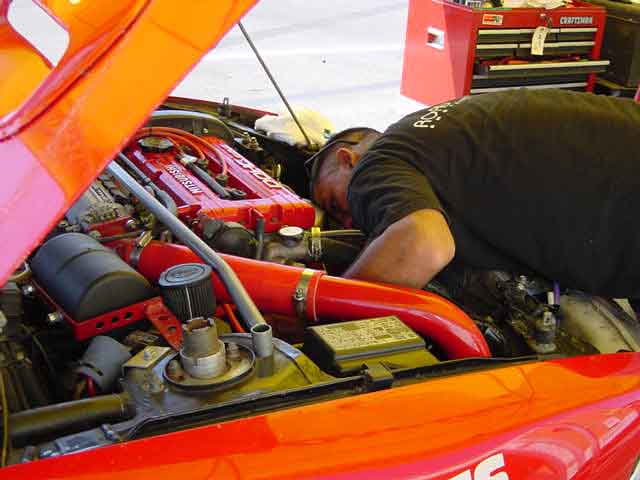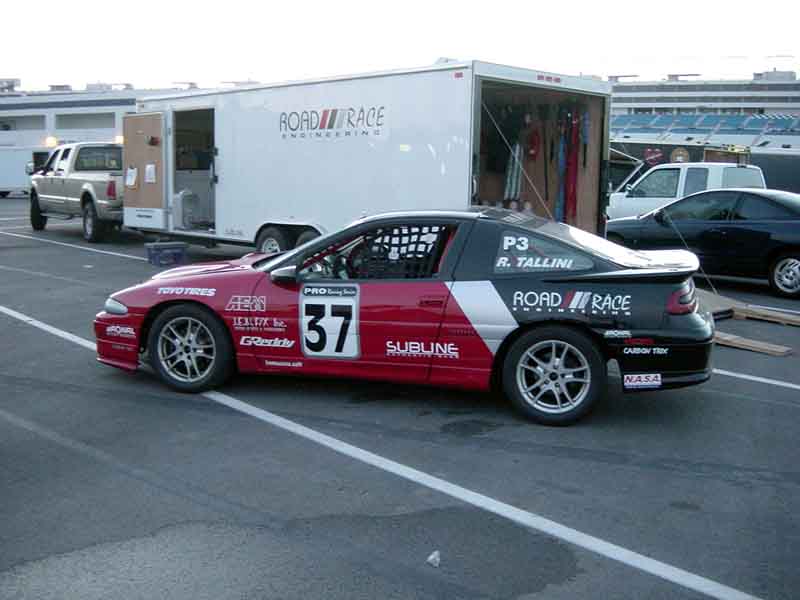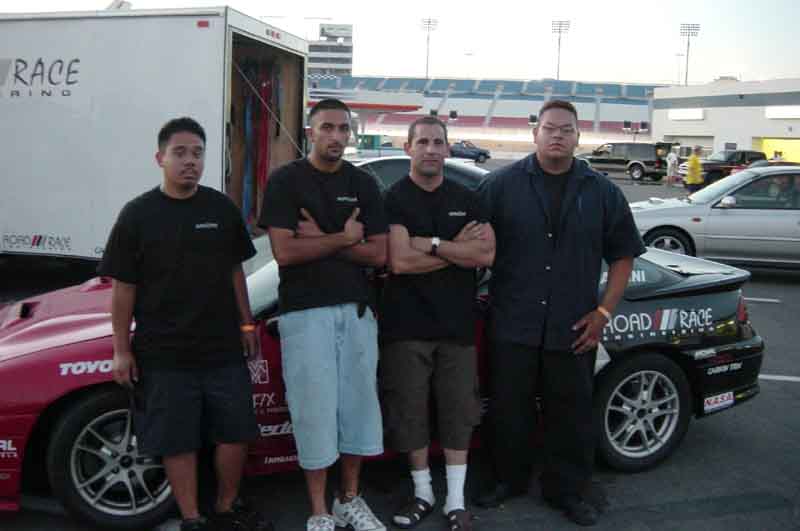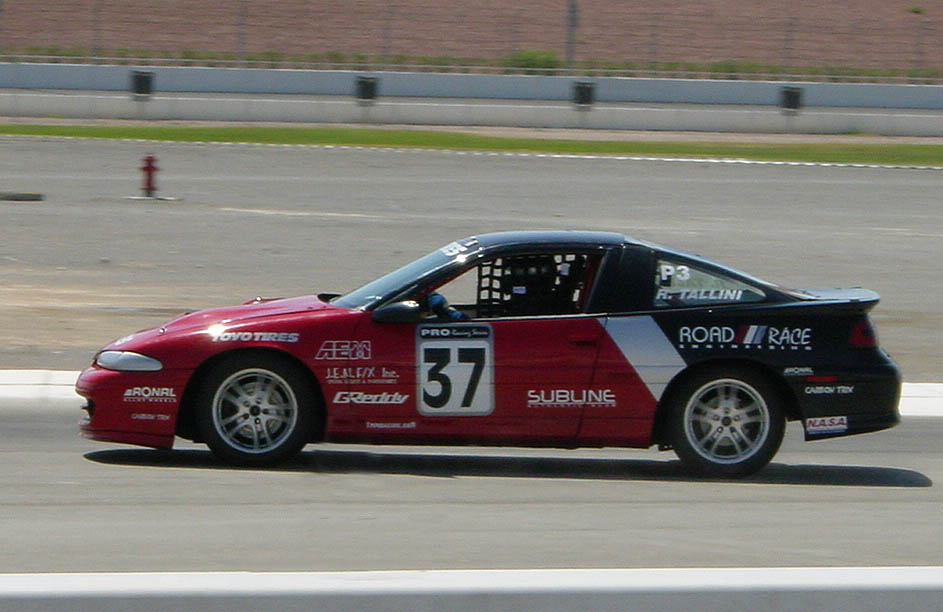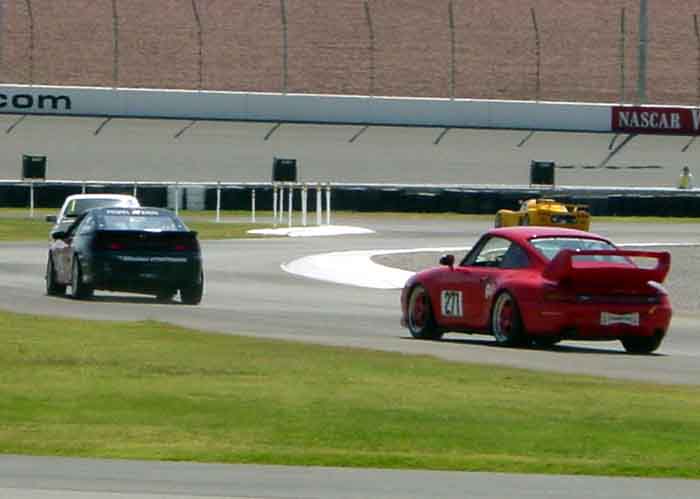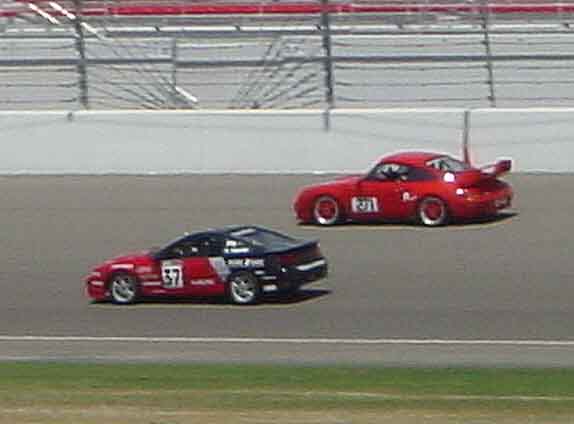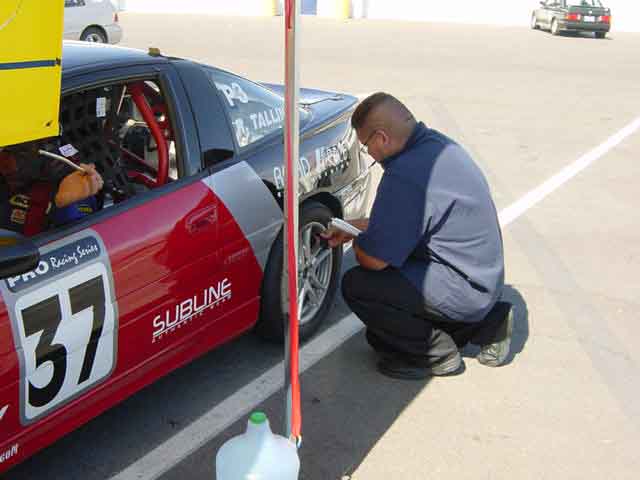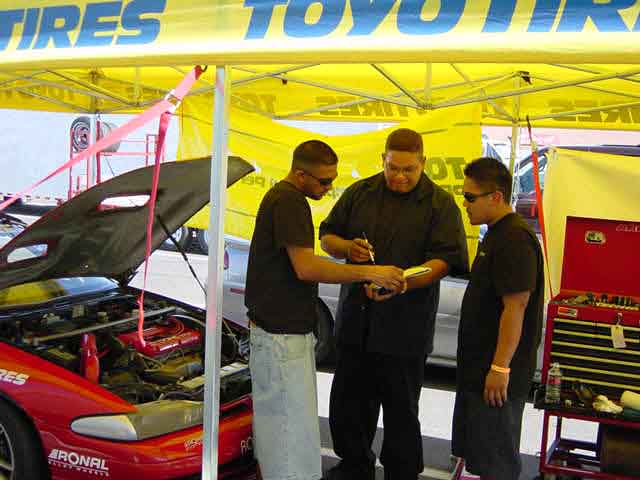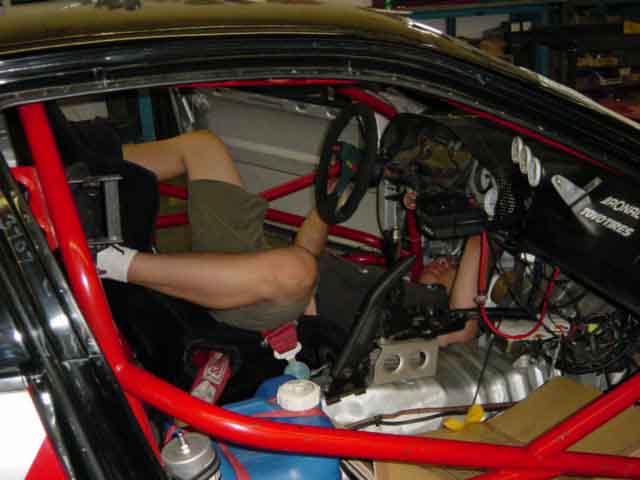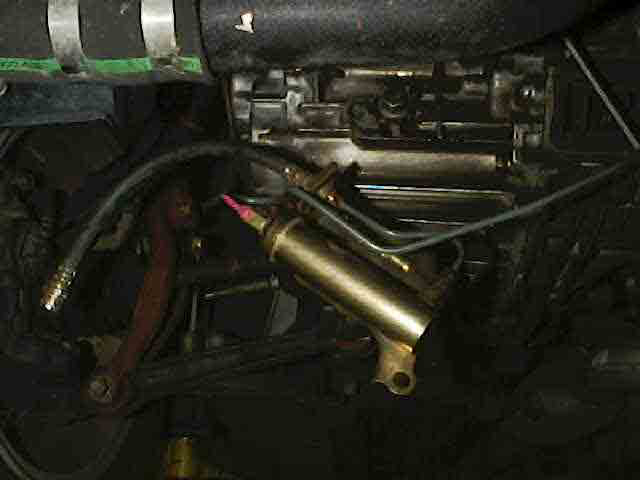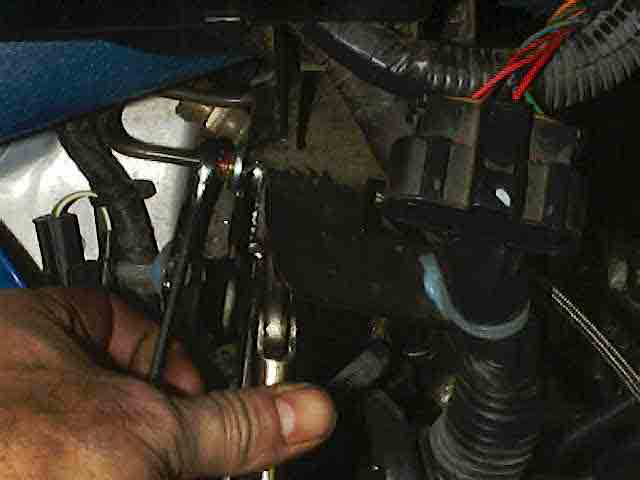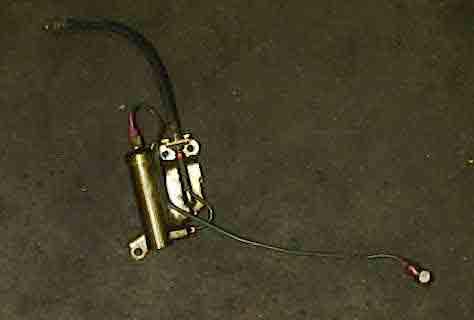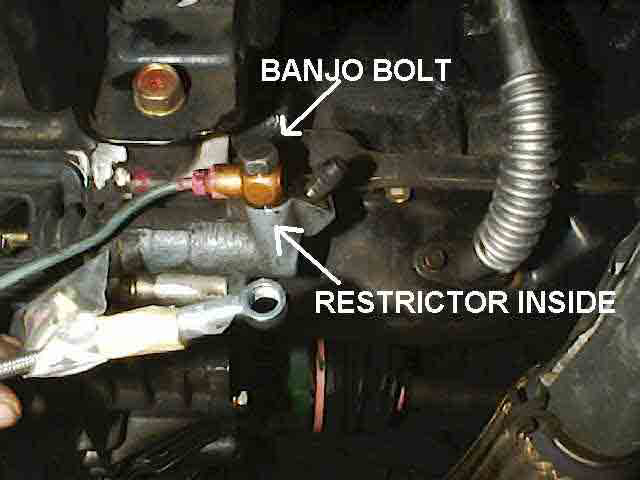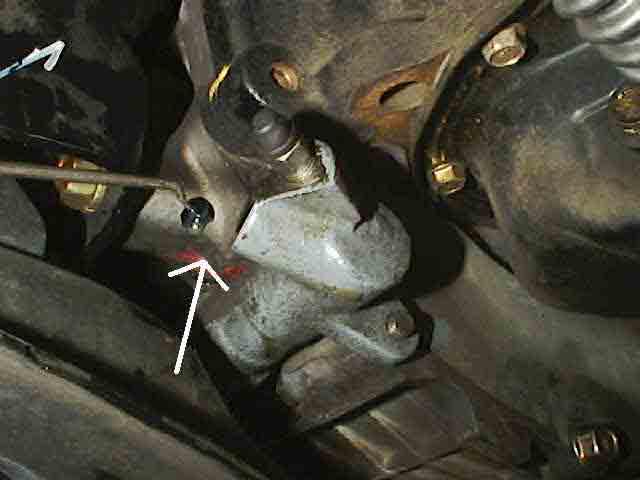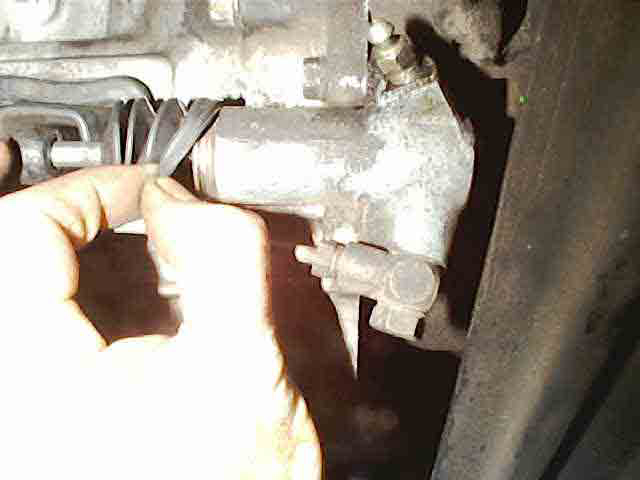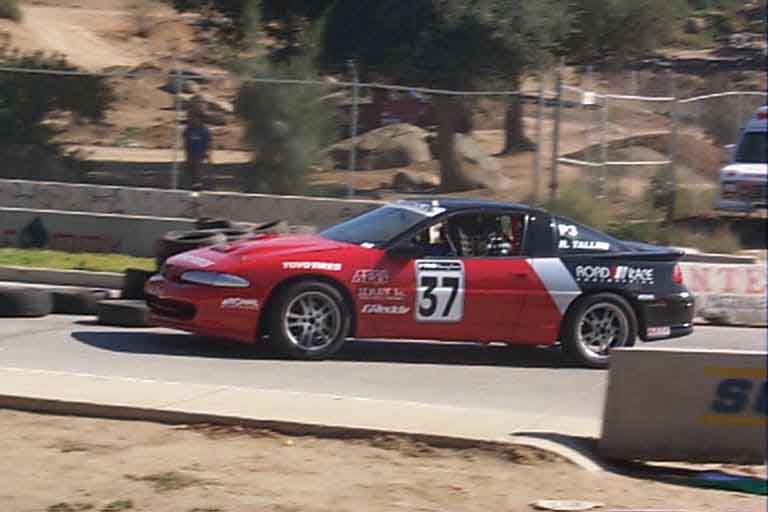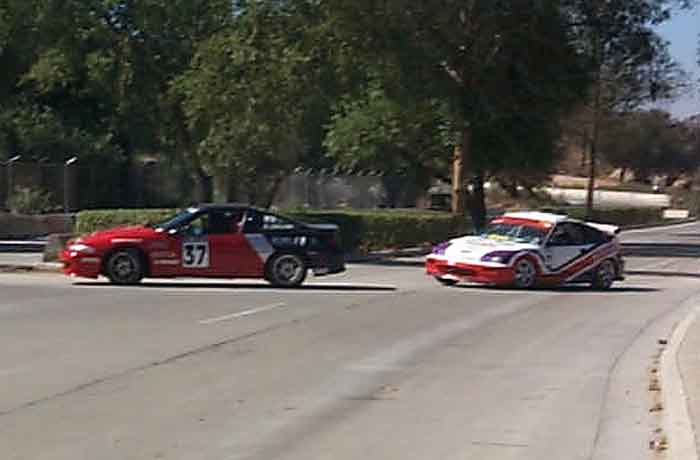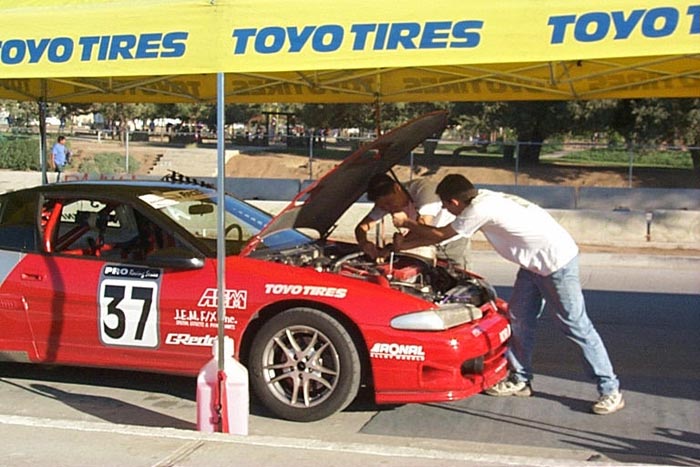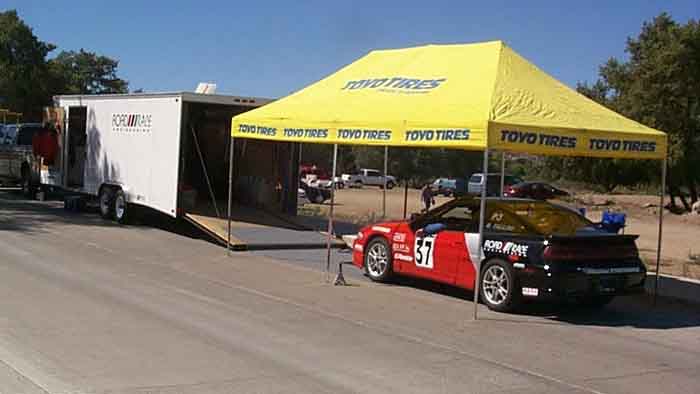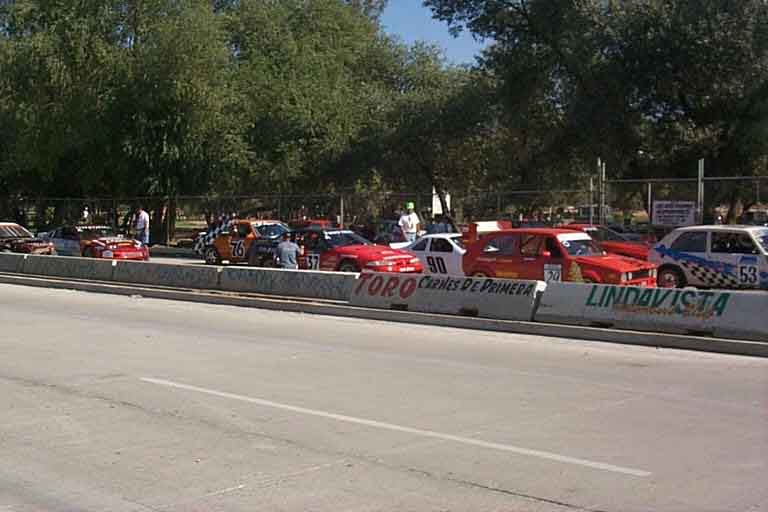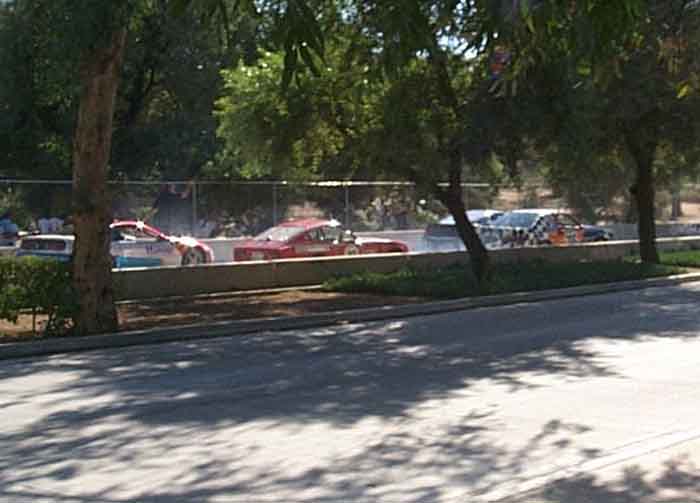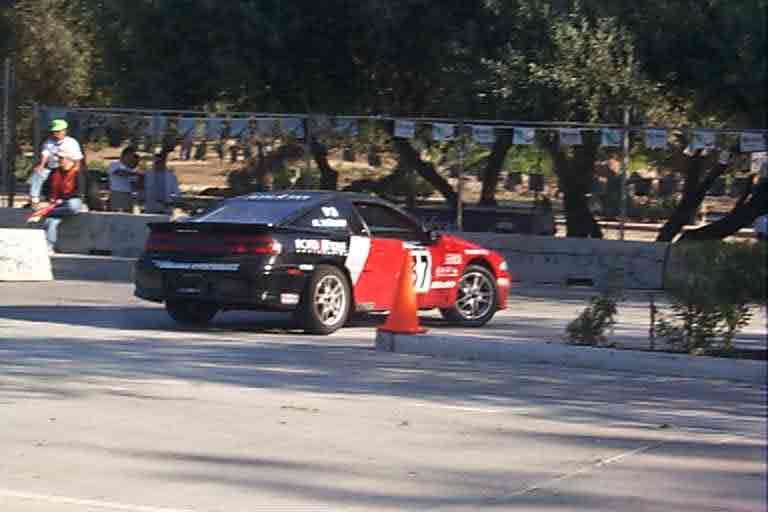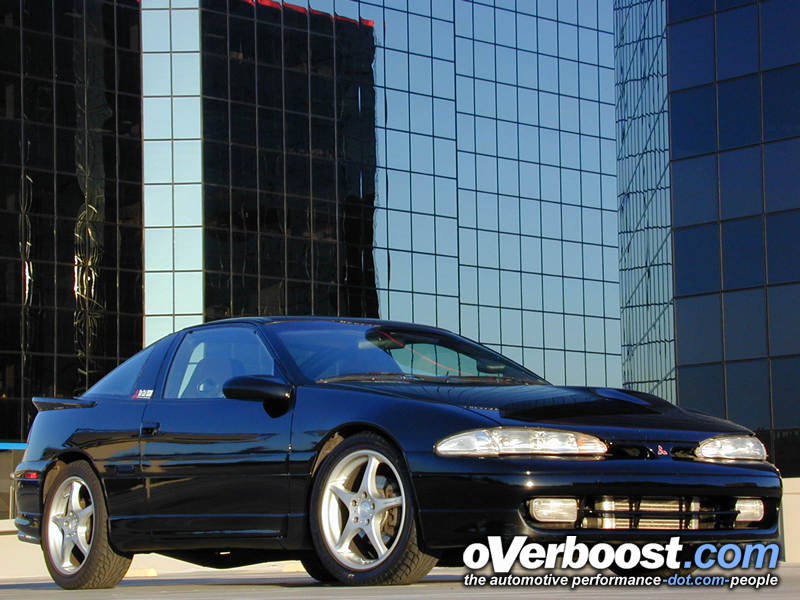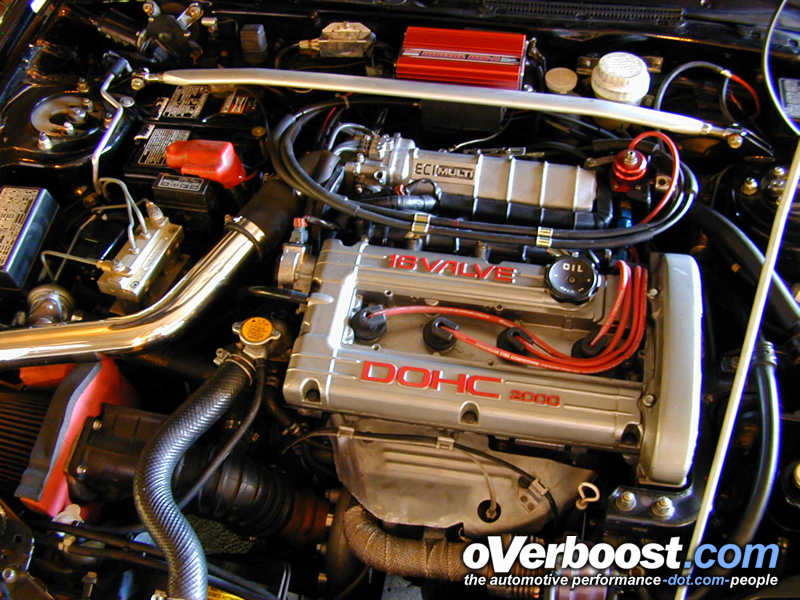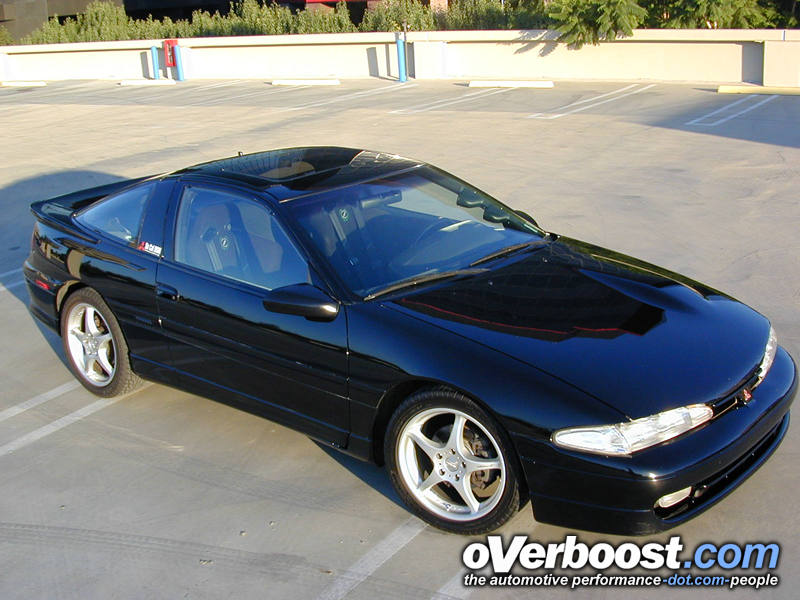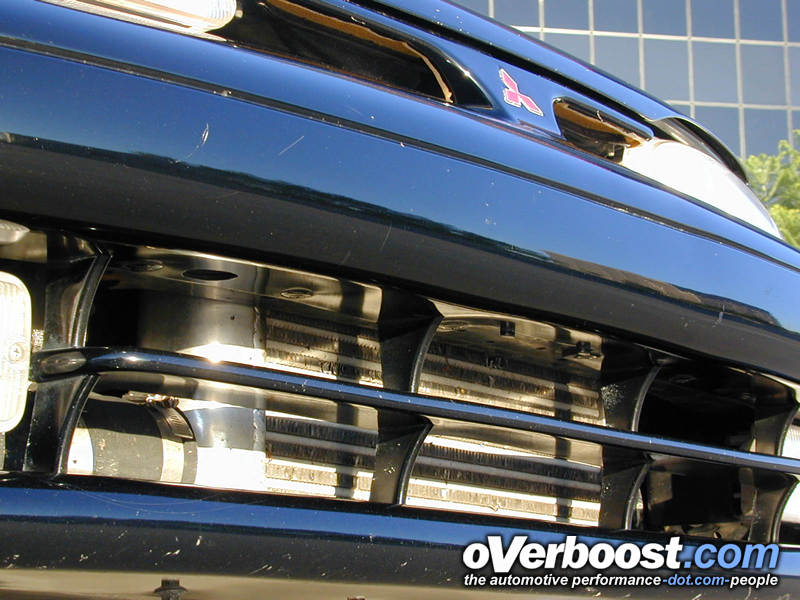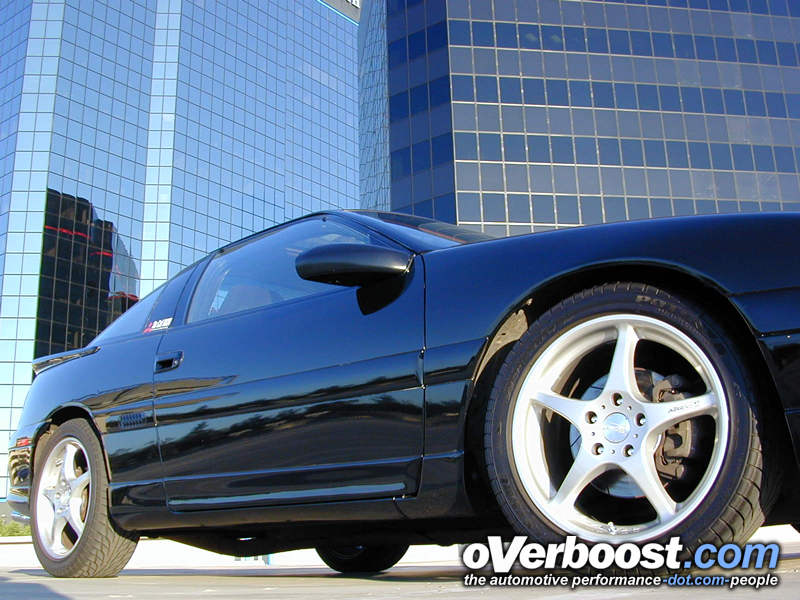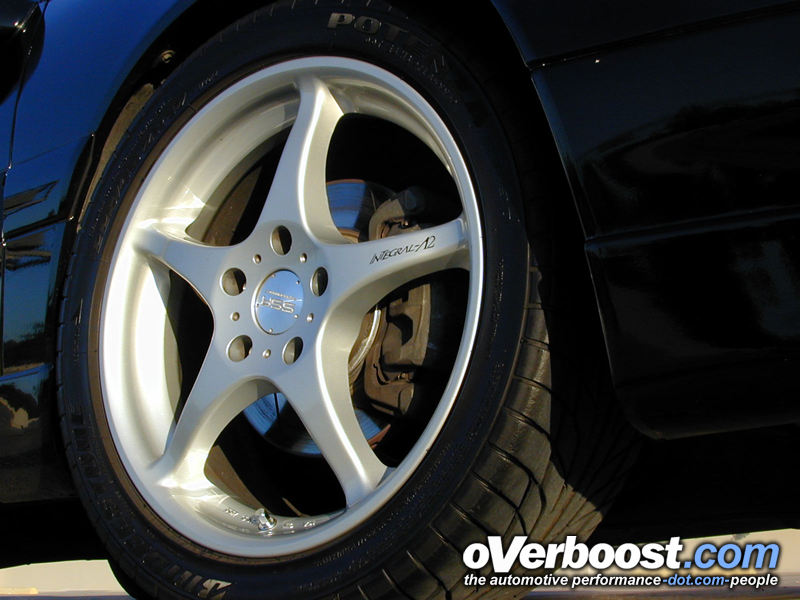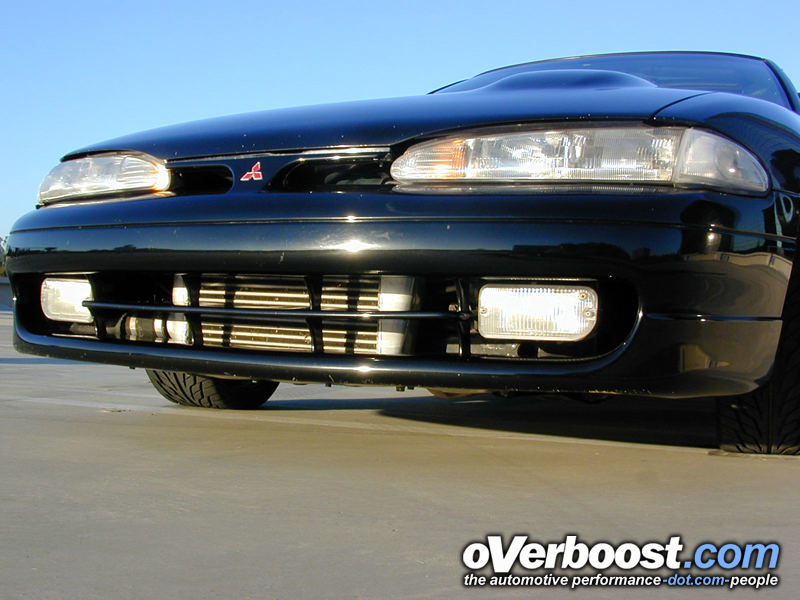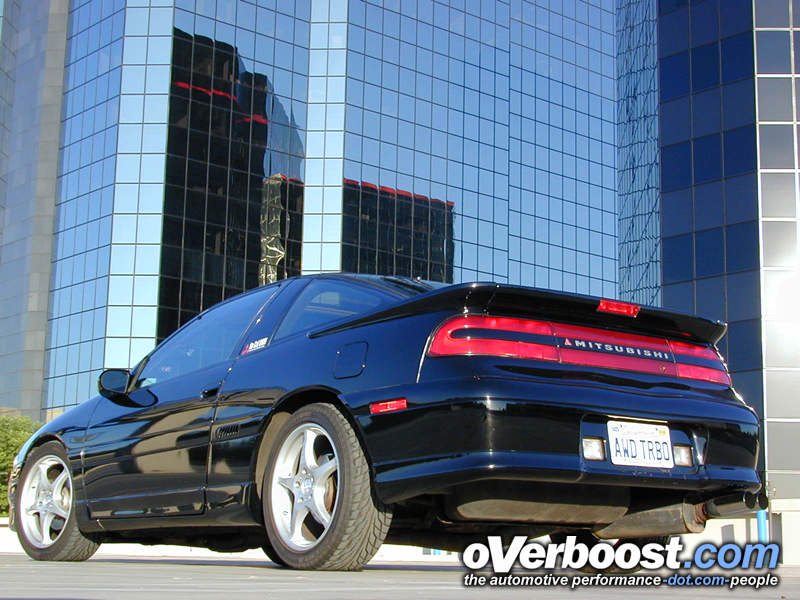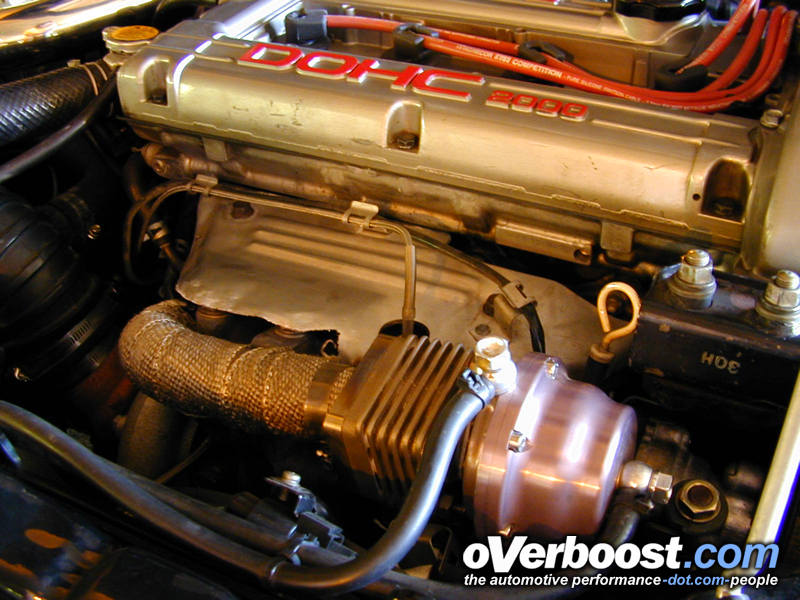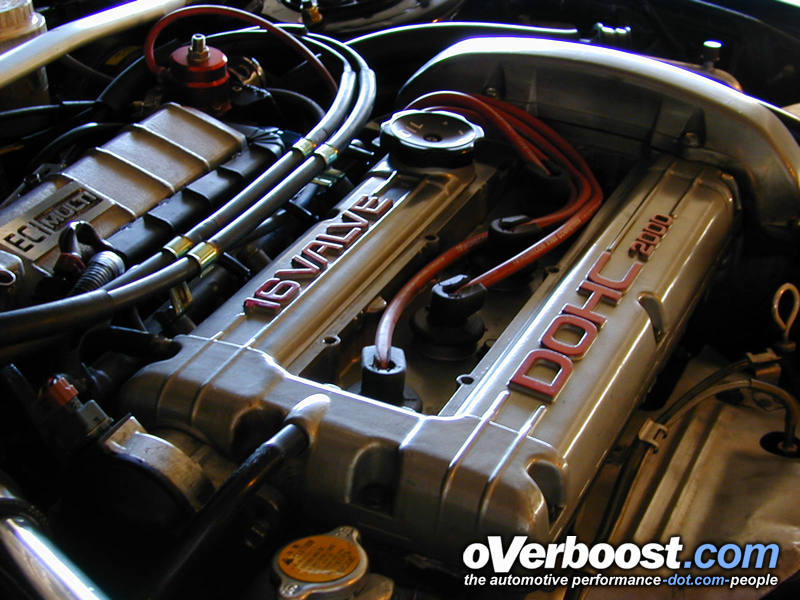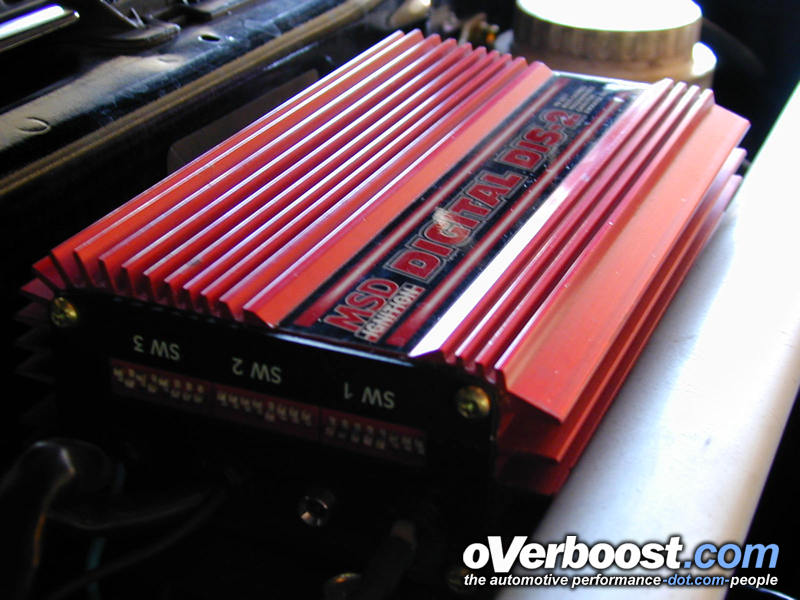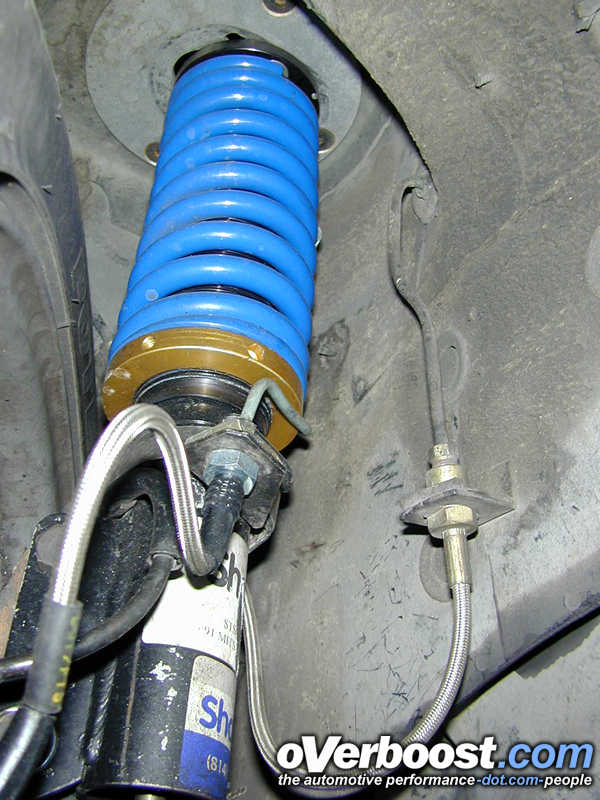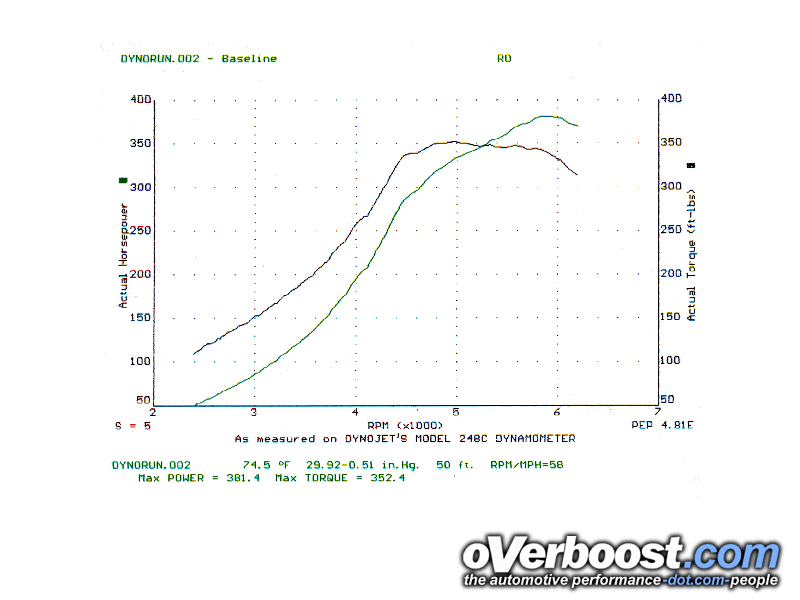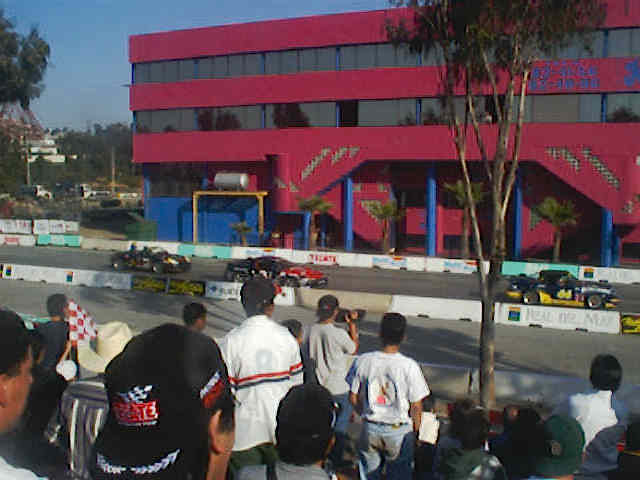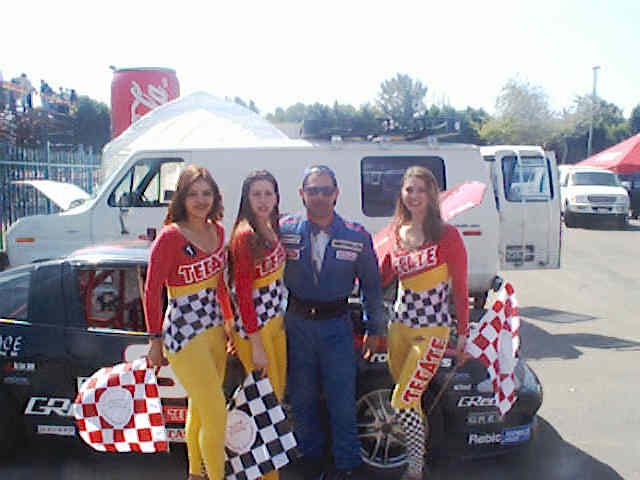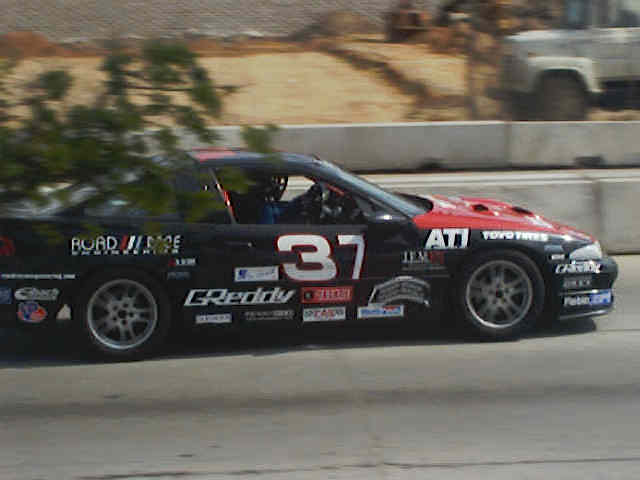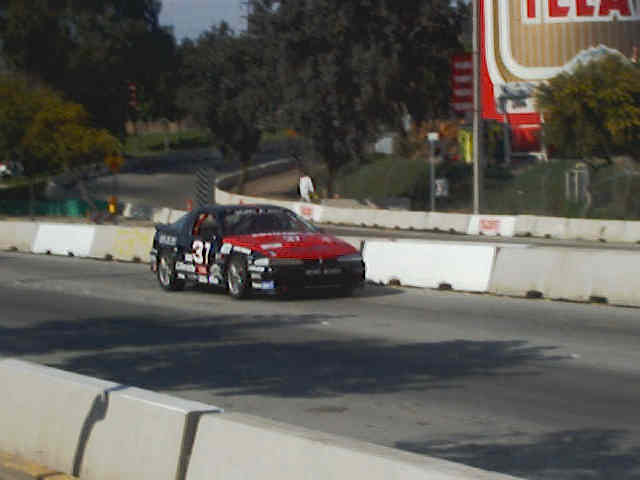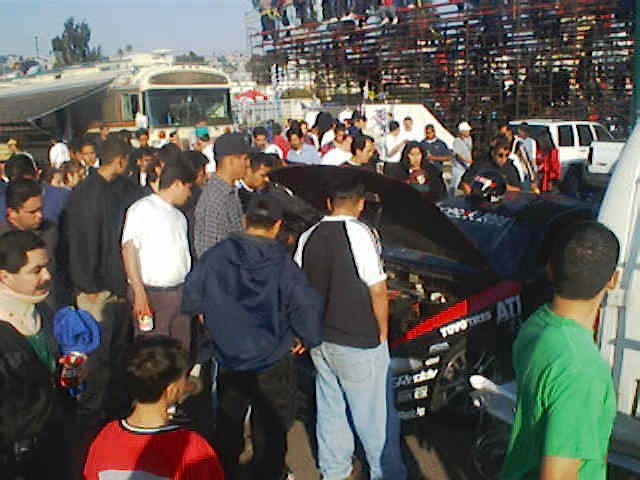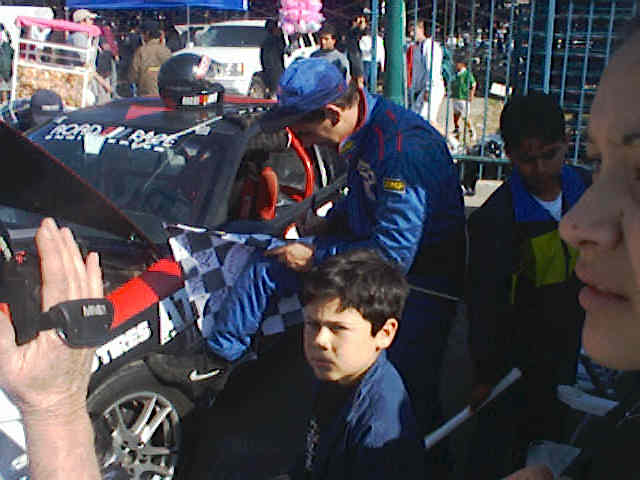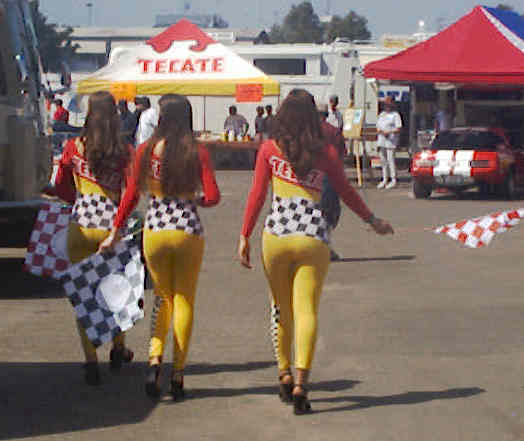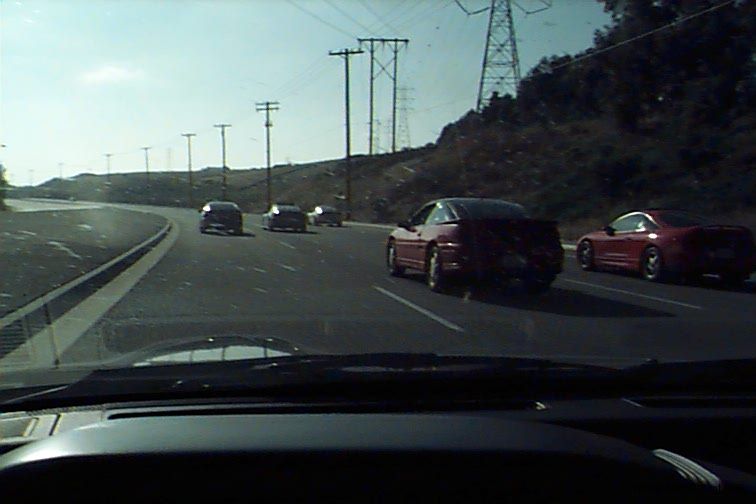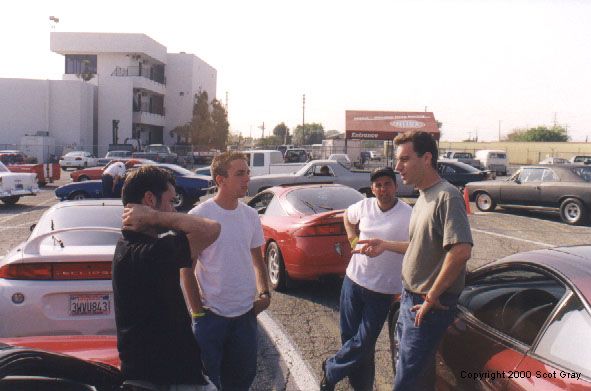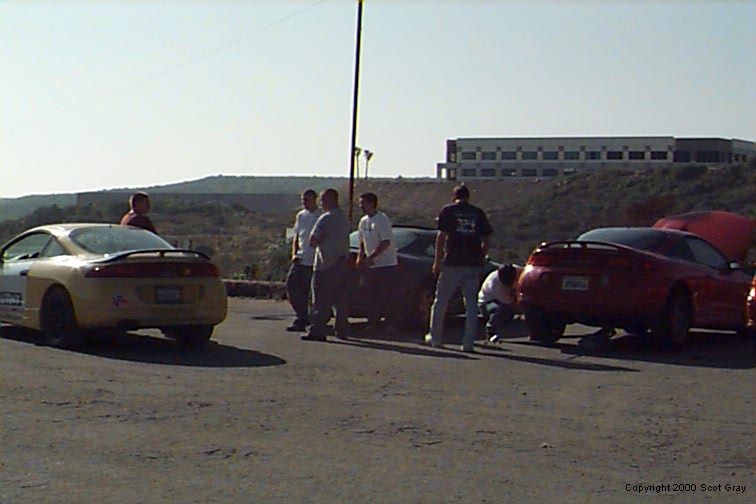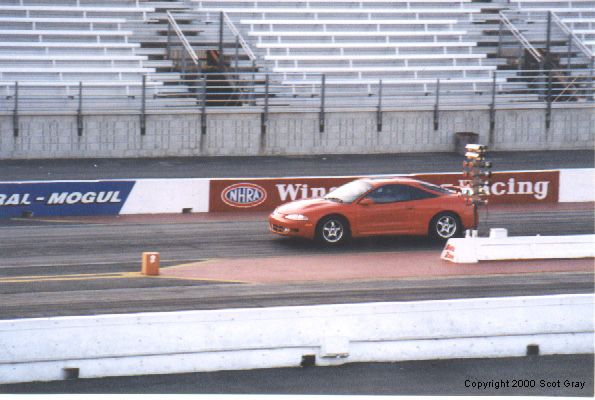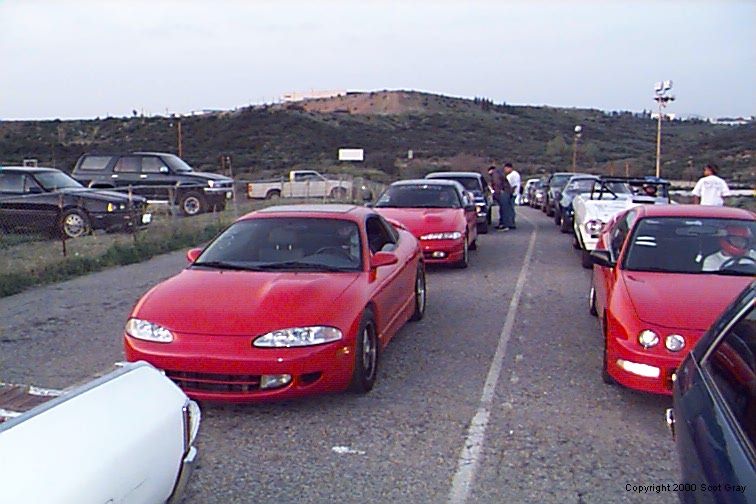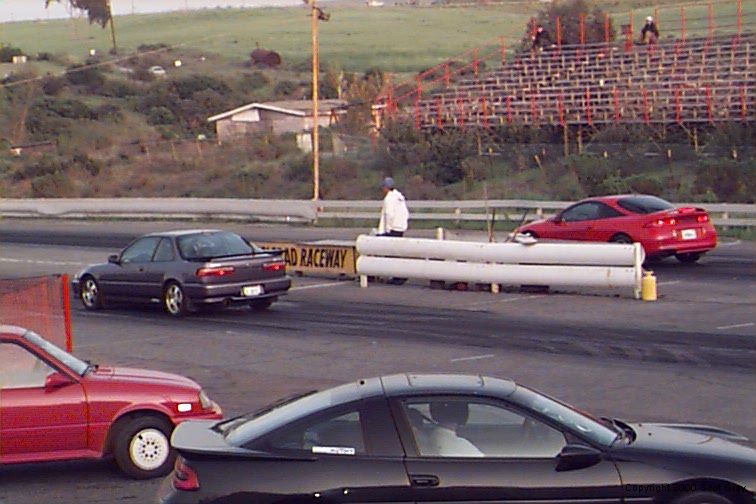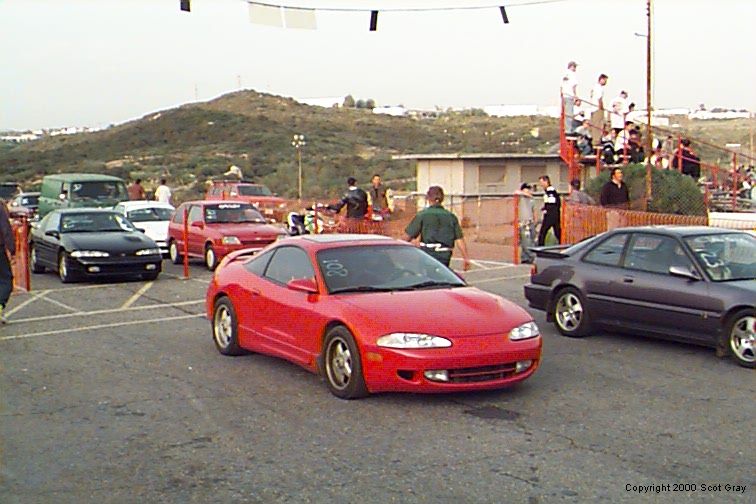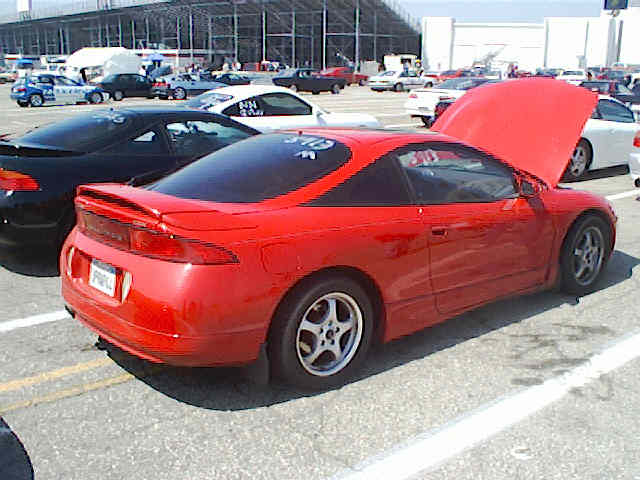2G DSM Eclipse 1G Motor Swap CAS Harness
2G DSM Eclipse 1G Motor Swap CAS Harness
[paypal_wp_button_manager id=6096]This is a cam angle sensor harness for those of you who plan on swapping 6-bolt motor in your 2G’s.
What it does: It keeps you from digging around in junk yards for the connectors to make everything plug in. It allows you to not understand tricky wiring diagrams. It connects to a 91-94 1G Eclipse CAS on one side and at the other end it plugs into your 2G wire harness where your old 2G cam and crank angle sensors would have in order to give a cam and crank position signal to the ECU.
What it does not do: It does not help you deal with any potential random misfire codes. It does not read and understand for you all the information here and here. It does not make a 1G motor instantly magically start and run in your 2G. It does not explain you the difference between trying to use a green lid or black lid sensor. It does not work if you buy a ’90 CAS.
On ’97-’99 Eclipses, you need to grab this blue wire from the 2G CAM sensor plug and solder to the white wire coming out the CAS harness.
Price $70.00 Please specify _your_ vehicle year. Not the year of the motor or ECU, the year of the Eclipse is what we need.
DSMs Still Alive and Kicking
So I got chastised the other day for not getting a DSM on the schedule quick enough. The customer implied that maybe we were too busy fixing the newer foo-foo EVOs and taking all their money to be able to get his lowly 2G Eclipse into the shop. :-/ So I took a lap around the shop to see what could be the problem. Turns out that there were nine 2Gs in the shop that day keeping us busy. It was his fellow 2Gs blocking his way!
I think we are one of the few shops that still specializes in the 1G and 2G Eclipse. Keeping it real and keeping to our roots :-) Just try not to break them faster than we can fix them.
License Plate of the Week
Corey Jenson’s ’97 AWD Eclipse converted from a GS-T. He hangs with LA DSM – San Diego, CA
And runs on E-85!
Willow Springs Track Night
Here is a cool video of Scot Grey out in his dope 1G at STREETS of Willow Springs braving the hot hot summer heat with some night action!! Scot can normally be found driving cars on the dyno as RRE’s tuner.
Our good friend and both customer and supplier Ziggy from Zeitronix also took his 1G GSX out for some night runs.
2G Eclipses!
Who says the Eclipse is all played out? Walked out in the shop today and looked around… it was all 2G Eclipses getting worked on.
RRE At Your Local Library
WINTER TIME!!
Cozy up to the fire in the cold California heat with a good book!!

http://www.amazon.com/Mitsubishi-Diamond-Performance-TuningHP1496-Hands/dp/155788496X/ref=pd_sim_b_3

Araknyd – One Clean Spyder
This is one of my all time favorite 2G Eclipses. Mark (Araknyd) has this crazy attention for detail and style that shows through out his 1997 Spyder GS-T. Sure it looks like a show car but it gets used as a race car too. Mark regularly drag races (1/4 mi.: 12.634 sec @ 108.52 mph, 1.84 sec 60′) and autocrosses his Spyder. Enjoy the pics!
MODIFICATIONS:
Engine/Turbo/Fuel:
- “Big” 16G Turbo
- Buschur Stage 3 Cylinder Head
- Stainless Oversized Valves
- Titanium Retainers
- HKS 264/264 Camshafts
- Fluidyne Radiator
- Stainless Braided Radiator Hoses
- RC 550cc Injectors
- Denso Fuel Pump, Upgraded Wiring
- Magnecor Plug Wires
- RRE Breather Catch Can
- A/C Removed
Intake:
- Extrude Honed 1st Gen Intake Manifold
- A’PEXi Front-Mount Intercooler
- Blitz Stainless Steel Mesh Filter
- Dejon Tools Intake Pipe (MAS to Turbo)
- RRE Custom Upper Intercooler piping
- 1st Gen Blow-off Valve
- 1st Gen Throttle Body
Exhaust:
- 3-inch cat-back made from a combination of Buschur and Thermal parts
- Victory Performance O2 housing (open dump tube for internal gate)
- RRE downpipe (2.5″ to 3″)
- 3″ high-flow catalytic converter
- Ported exhaust manifold
Drivetrain:
- Quaife Limited Slip Differential
- ACT 2600 lb. clutch
- 14.5 lb. lightened/balanced flywheel
- Shortened shifter
- Aluminum shift cable bracket bushing replacement on tranny
- “Symborski” shifter bushing modification
- Stainless steel clutch hose
- FCU (fluid containment unit) bypass
Suspension/Chassis/Interior:
- Custom 6-point roll bar by Mark McMahan
- Ground Control adjustable height coilovers (1.5″ lowered)
- Tokico Illumina 5-way adjustable shocks
- Eibach Racing Springs (500lb/300lb)
- RM Racing Stabilizer Bars
- Front strut tower brace
- RRE Lower Stress Bar
- Corbeau Forza racing seats
- Simpson Cam-lock 5-pt Harness
- SSR Competition 17×8″ wheels
- BF g-Force Drag Radials 225/45/17 (street)
- M&H Drag Slicks on Bogart 13×8 wheels (drag racing)
- Porterfield R4S brake pads
- Stainless Steel brake lines
- Prothane motor mounts
Gauges, Electronics & Controllers:
- A’PEXi S-AFC A/F Controller
- GReddy Profec B Boost Controller
- GReddy Turbo Timer
- Autometer Sport Comp Boost Gauge
- Autometer Sport Comp EGT Gauge
- Autometer Sport Comp Fuel Pressure Gauge
- Autometer Sport Comp Air/Fuel Gauge (gadgetseller.com version)
- OBDII datalogger
RRE Turbo Oil Supply Line Instructions
| Install the banjo bolt fitting onto the end of the -4 stainless line and tighten the fitting before bolting the banjo fitting to the turbo. Install the assembled oil supply line to the turbo before installing theturbo onto the manifold. Use new copper crush washers and torque the banjo bolt to about 25 foot pounds.1G: Remove the correct Allen plug from the oil filter housing. See the photos below for the correct location !If the Allen plug is tight and you think that you might strip out the Allen socket, heat will loosen it. The heat allows the aluminum housing to expand and loosen it’s grip on the plug. Heat also loosens any thread sealant. Get it warm with a propane torch or oxy/acetylene torch. Don’t melt anything, just warm it up good. If you strip out the Allen fitting to the point that an Allen wrench wont turn it, you are screwed.2G: Remove the larger fitting and replace it with the 90 degree fitting.Use thread sealant or Teflon tape on the pipe threads that screw into the housing. Note that the threads are cut into the housing at a different angle than the face of the housing. It will almost look like it is threading into the housing crooked. Be careful with any sealant or tape, you do not want anything to get into the turbo bearings.If you find that the clearance to the oil pressure sensor is too close to the fitting to screw it in, remove the sensor, install the 90 degree fitting and re-install the sensor.
2G Connected at the turbo Oil supply location on a 2G Note that the fitting screws into the housing hole at a slight angle to the machined face. This can seem a little odd when first getting the threads started. Note the angle of the stock adapter fitting before you remove it, this will help. The fitting threads are a tapered pipe thread, as you screw it in, it will get tighter. Be sure to stop at a clocking that will allow the proper run of the oil line. Tied off to the fan shroud. Tied off to the fan shroud. Don’t let the line contact the fan shroud directly. We use a double zip tie to separate them. 1G If you specified the oil supply line for a 1G, use the supplied short 10mmx1.25 bolt and crush washer to block off the stockoil supply location at the cylinder head. Oil supply location on a 91-94 1G Turbo 91-94 1G supply location pictured. You want the upper and outer fitting location. Using the lower fitting on a ’91-94 oil filter housing (water cooled oil cooler) will result in the turbo receiving unfiltered oil. 90 1G supply location pictured. On a 90 model oil filter housing, the two fittings are spread out a little more. Use the lower fitting on a ’90 oil filter housing (cars with a factory air cooled oil cooler). Using the upper outer fitting will give unfiltered oil to the turbo. Stock, the turbo oil supply is just about the last oil in the whole motor. If you get it at the oil filter housing, you get oil fresh out of the filter. Note that if you do not use the specified location, you will be using unfiltered oil. |
Scot’s Got Some New Toys for his GSX
RRE’s tuner Scot Gray is dialing up the cute on his built motor. We had his valve cover and intake manifold gloss black. We topped off the valve cover with the RRE Hot Dog Grille plug wire cover in brushed aluminum finish. With what we learned from when Justin powder coated his valve cover last year, we made sure nothing got inside the valve cover when it got sand blasted to clean it up. The intake manifold also got a thorough cleaning inside before installing it.
Scot picked up a carbonfiber hood from Carbontrix next door. Carbontrix also set him up with one of our hood scoops in carbon. We cut it into the hood to grab the hot air coming off the radiator and turbo just ahead of the valve cover.
RRE- Rob Tallini – Las Vegas Motor Speedway 11/2001
Back to Vegas we went for another event. This time it was all on the short infield stadium track, no oval action. In attendance were the usual German cars we love to pick on so much. An interesting car that was in attendance was the Porsche Super Cup 996 that won the European Championship this year. Recently purchased for $150,000, this 996 was flawless, big slicks, air jacks, real racecar stuff.
After our “rally” race in Tecate, we went through the entire front end of the car. It looked more like it had been through a season of rallying that a street race. We replaced the engine cross member, the motor mounts, all the suspension and cross member bushings. We found several cracks in the main cross member that we welded up and we had to replace the steering rack. The wheel bearings were shot and we also replaced the axles and CV joints to be safe.
While the maintenance was all necessary, it ended up working against us to some degree. Our Eclipse was again handling diabolically. Just when we had went softer with the springs on one hand, overall we were now stiffer with all the other improvements. We kept chasing the set up and again decided our set up was too stiff for this track. It was better suited for a fast track like the oval or the big track at Willow Springs.
We qualified 3rd, a real disappointment for Tallini and the crew. Ty, Eric, Bobby and Jose our crew had changed everything possible to correct matters but we were limited by the springs we chose.
Nonetheless, the race went well for us. On the start, Tallini again punked the Porsches and we jumped from 3rd to 1st into the first turn. Tallini led the 2 faster Porsches and a BMW, the class of the field. Holding them at bay for a third of the race, we started to blister a left front tire. Tallini could feel it and could no longer hold back the Porsches. They slipped by in a tight right hander. The three of us appeared chained together, that was when the 996 choked under the pressure. He was leading the pack he ran a little wide in a left hand sweeper. Instead of riding it out, he got greedy trying to get back on the track. Oops! He caught a little traction on the front wheels and with the weight of the rear motor influencing things he shot across Tallini’s bow backwards at about 80 mph backed the beautiful car into the barrier. Now we started getting some game from the BMW. He passed us and we passed him. Both of us were ringing out our cars like a dishrag!! This went for a few laps until we could pull out a little. While all this was going on, the other Porsche slipped away. We easily finished second.
We inspected the car after the race and found that left front tire with about 10 holes the size of a silver dollar in it. Remember the dishrag? All and all we were pleased. We had competition, learned more about our racecar and brought home another trophy. Testing is in order now. We need to soften up the springs some on the tighter tracks in order to get the car back to it’s old self.
RRE – Rob Rallini -Tecate Grand Prix 2001
http://www.youtube.com/watch?v=sCBiZAUubQ
After our triumph in Vegas, we headed south of the border to Tecate. This event is entirely different from races we do in the U.S. The track is a temporary street course approximately 1.9 miles in length. It is rough, dusty, and unforgiving. We again brought our 1G Eclipse. Many other gringos from the Porsche Owner’s Club, Touring Car Club, and NASA joined us. Having previously dominating our Group A class in the Border series, we were nicely “invited” to run our car in Open Class from now on. Open Class is just that, anything goes.
The primary change we made to the car was all new JIC shocks and springs. Our old suspension had a lot of mileage and it was time to upgrade to something more current. The weather was mild by comparison to Vegas so we felt confident with the engine as it was set up. Suspension tuning was our primary concern.
Tallini went out for practice and returned shaking his head. The track was so rough and the springs we were given so stiff, it made the car undrivable on what was effectively a paved rally course. “The car is always off the ground!” Tallini said. Literally, as there were two “yumps” on the front straight away. We worked frantically to soften up sway bars and tire pressures in order to minimize this problem before qualifying. Since we weren’t the only ones dealing with the rough track, all the teams were busy dealing with suspension set up.
Qualifying was uneventful. We did our usual routine of hiding from the competition, laying down a few fast laps, and then sneaking up behind them in order to size them up. Tallini came back with second overall fastest time. One of the POC Porsches, Dino Casamasima, had put down a time a whole second faster than us. We felt like we had a little more car left but we were afraid we might break something in the driveline. We thought it was prudent to save the car for the race on Sunday.
Warm ups in the morning should have been uneventful, but after 3 laps Tallini pitted with smoke pouring out from under the hood. We broke the turbo oil return line (rally style) and fortunately had a spare in one of the rally boxes. No problem.
Before the race we discussed how to handle our pole sitting Porsche. We decided, go for the win or break trying. Standing starts usually work to our advantage. On the outside of a staggered front row, Tallini launched hard on the Porsche and beat him into the first turn. Nose to tail for laps, the Porsche kept taking stabs at us and even got past in the braking zone at the end of the front straight. Tallini immediately worked him over and retook the lead. The race was turning into a gladiator match. Unfortunately for Porsche, we hired a meaner Italian and the gladiator match was over. After squeezing each other in the braking zone, Dino ran wide, clipped a curb and developed a leaking right rear tire and he slowed. SET, MATCH, GAME!
We smoothly sailed home to victory. With thousands of spectators lining the track. Tallini took Welch for a victory lap and saw first hand just how rough it really was. They love us in Mexico!! Fan clubs, Tecate girls, appreciative people, Mexico has it all. We can’t wait to go back.
Our friends from Open Track Ryan Flagharty and Gus Heredia also ran their 4AG Corollas in the Group B class. Gus won Group B.
RRE- Rob Tallini – Las Vegas Motor Speedway 8/2001
We couldn’t resist the opportunity to run with NASA and the PRO Racing Series on the American Le Mans Track at Las Vegas Motor Speedway. Unfortunately, August in Las Vegas means triple digit temperatures. We went for it anyway in our 1G FWD Mitsubishi Eclipse.
There were quite a few Porsches and BMWs in attendance as well as a variety of American muscle cars. Cars ranged from Porsche 996 and 993 ALMS cars to Southwest Tour Cars. We ran in the under 3.0 liter anything goes class.
Practice and Qualifying were quite the challenge due to the heat. Our driver Robert Tallini had never driven this track so he paid close attention to finding the fast way around the oval. We played with sway bars and tire pressures in order to optimize the temperature in our Toyo tires. We slowly dialed in suspension while at the same time, data logging engine vitals.
The 110+ temps in Vegas made dialing the engine in even more important than suspension. Qualifying went well and we had the pole in under 3.0 liter class (7th overall). Closest were a pair of BMW M3s. We were happy with that but Tallini knew there was more left in the car. We made a few more adjustments and prepped the car for the race.
Inside the 4th row the start proved to be a revelation. When the green flagged dropped, Tallini passed 3 cars into the first chicane. Typically we get good starts but we were amazed at the couple hundred thousand dollars worth of German hardware we passed. All race, three Porsches (a 996, 993 and a RS2) chomped at our heels.
Tallini said he spent more time looking backwards than forward. Every lap we thought we would get out powered down the straight. Not the case. Every lap we thought we would get out braked at the end of the straight. Never happened. For a half hour all eyes were on us. People couldn¹t believe a Mitsubishi could beat up all these purpose built race cars with double the horsepower and big slicks!
As the race wore on, Tallini kept us leading our class by 12-15 seconds and battled for the overall podium. Near the end of the race, tire temps soared and the car got harder and harder to drive. After a series of tight turns in the infield section our new German friends got within striking range and one struck. In the entry to the hairpin he got in under us and pushed Tallini out to the grass. With 2 wheels in the grass we lost the drive out of the corner and the Porsches slipped by.
Fortunately, a couple of DNFs in front of us allowed us to finish 4th overall and of course we won our class by 14 seconds. Tire wheel temps were so hot that the valve stem caps were melted to the valve stems. We were pretty stoked afterwards and more than a couple of German car owners actually came up to shake hands. They were impressed with our Mitsubishi Eclipse and perhaps a bit embarrassed by us.
The Crew
Left to right: new mechanics @ RRE Christian and Bobby, Driver Rob Tallini and honda Robert
RRE 2G Eclipse SS Clutch Line Instructions
2G Turbo Cars (95-99)
The RRE SS Clutch line replaces the Rubber flexible line that runs from the frame rail under the fuse box down to the transmission. On a 2G car, it also replaces the reservoir that is bolted to the front of the transmission.
Unbolt the fuse box so that is can be shifted to the side. Crack loose the 10mm flare nut to the stock hose. After it is cracked loose then remove the clip that secures the hose end to the bracket with pliers. Unbolt the reservoir from the transmission by removing the 3 12mm head bolts. Remove the banjo bolt to the slave cylinder.
Here is a pic of the stock hose / reservoir / line assembly once it is removed.
Install the new line using the supplied banjo bolt and new crush washers. You will need to bleed the clutch fluid of all air in the lines. Use any brake fluid for the clutch hydraulic fluid. Check for leaks.
When installing the SS Clutch line, you have the option of removing the clutch fluid restrictor. It is a small plate with a .050″ hole in it that slows down the release of the clutch. Mitsubishi put it in there to help make clutch release smooth and slow. If you want it to release faster than you have now, pull it out. Our suggestion is to try your clutch with just the new line first. If you want more grab than that, pull the restrictor too, just be careful what you wish for.
This is a pic of the restrictor being picked out of the hole once the banjo bolt has been removed.
This is the restrictor once it is removed
While you are down there replacing the clutch line, also check to see if the slave cylinder is leaking. Pull back the rubber boot. There should be NO fluid in there. If there is fluid behind the boot, it is leaking past the piston and seal. Most 1G cars and many higher mileage 2G cars will have this problem.
Rob Tallini – RRE Eclipse GST – Tecate, Mexico 2000
The track was pretty cool for a street course. It was in a hilly area based on a divided highway through a slight valley right by the Tecate Brewery. One side of the road went up and curved back down the side of a hill, then to a short straight with a long dip, 90 right, hair pin right, sweeping left back on to the wide road through the valley that curved slightly. Since it took you at a pretty high speed (110-120) down to another hair pin right back onto the front straight, they built a chicane out of tires to slow things down before the hairpin. This tire barrier would get regularly rearranged from cars blasting through them.
Practice
Rob Tallini was driving our 1G FWD this weekend. On Saturday Morning, the car started running a little hot. We found one of the flat fans had died, melted solid inside the fan motor. Scot Gray went on a tour of down town Tecate looking for some kind of universal flat fan. Not in Mexico. Lucky for us, our number one race fan in Mexico Pedro Kim volunteered to drive to Pep Boys in San Diego to get one for us. He lives in Tijuana and had driven all the way to Tecate to see us. He has been to every Mexican race we have run and even drove up to watch the LA Street Race. Pure devotion. We just turned the boost down to 1.0 bar and it ran cool enough till we got the fan installed.
Qualifying
We qualified fastest in Group A on Saturday but were a little slower than the faster open class cars. Power seemed a little off even for 1.0 bar and there was a little dark smoke when the car came on full boost. We went looking for a boost leak and found one, one of the Allen bolts to the compressor outlet flange was a millimeter too long and wasn’t tightening the flange down enough. Fixed that up Saturday after the sessions and were ready for the Sunday morning warm up.
We turned the boost up to 1.2 with the overtake boost set at 1.3 for 6 seconds (one of the few working PRofec A’s in captivity) and with new Porterfield R4-E’s the car was pretty much dialed in. We played a little with tire pressures and were ready to race. This time they combined the three fastest groups so we got to play with the faster open class cars. The two fastest were VW Rabbits running 2.2 liter 16 valve motors (one turbo and one supercharged) and weighing 1800 lbs. Power to weight we were about the same and they had a lot less weight for their brakes to slow down.
Race
They started the race groups separately in their qualifying order. We were at the pole position of the second group, standing start. Rob got a good launch on El Coyote in the Mustang (pronounced “Moose-estang” in Mexico) and just squeezed in front of him heading up the hill. As soon as the open class cars disappear over the hill and as Rob is approaching the crest of the hill, we see a huge dust cloud rocketing along the side of the hill and down to the center of the little valley. Red flag all corners, everyone back to the start. One of the open class cars (a 1500 lb Pinto with a XR4Ti turbo motor) was the victim of a little too much enthusiasm on cold tires and cold brakes.
Restart
Re start is a replay of the first one. Rob worked his way through the remaining open cars and up to the back bumper of the lead bunny. They played with each other up to about the 1/2 way point, Rob was a little faster but since they weren’t racing for actual position tried to be nice. He got a little bored and started working on a pass but the Rabbit started blocking, on one drive out of the last turn Rob ended up giving a little “assist” for the Rabbit up the front straight. The car gets hot with no air flow when following close so he let the Rabbit have a little space.
Then bwaaa…pop. It just started misfiring and sputtering. No juice race over. The alternator kicked the bucket. Rob coasted in to the pits. Arturo in the red rabbit went on unchallenged to finish first.
After our strong showing in the last two races we were politely asked if we “wanted” to move our Group A car over to their Open Class. No problem.
Scot Gray’s Eclipse GSX Featured on Overboost.com
Scot’s GSX just got shot for SCC magazine and will be coming out next month there. Here it is on www.overboost.com right now:
1994 Mitsubishi Eclipse GSX
8/25/2000
John C. Naderi
Throughout the DSM circles and chat forums the tales surrounding this car (and its owner’s prodigious driving talents) have grown to mythical proportions. We know this because our web architect is the proud owner of our Project Eclipse and he constantly regales us with starry-eyed stories about this car’s exploits. We’ve heard many different accounts of this car and driver manhandling Porsches, Ferraris, Vipers and ‘Vettes on strip and street circuits. With this in mind, we nervously ventured out for an appointment with the man who belongs to this legendary machine. Upon our arrival we half-expected to find a Thor-like gladiator standing next to the Batmobile in front of some fog-enshrouded castle.
What we found was actually a mild-mannered Scot Gray standing in front of his equally mild-mannered 1994 Mitsubishi Eclipse GSX. After we completed our photo session Scot agreed to take us for a “relaxing” drive through the hills by his home. Once behind the wheel Scot quickly shed his Bruce Wayne image. Straight line acceleration runs are not really dramatic affairs as the all-wheel drive delivers you to warp speed in the same fluid fashion as the Millennium Falcon. But it was through the twisties that both the Eclipse and Scot’s tremendous driving talent shone through. We’ve had the opportunity to be both pilot and passenger in some of the most powerful race and street machines on every circuit from Willow Springs to the Nürburgring but nothing could have prepared us for this ride. “I’ve been to Skip Barber’s school and I’ve put the car through over 120 track sessions,” Scot told us nonchalantly. This was not cocky bragging on his part but rather something he probably says to alleviate passengers before reducing them to frightened, whimpering sacks of limp flesh.
Our brief ride with Scot confirmed the many fantastic tales we’ve heard so many times before. We’re obliged to report that both the car and driver, do indeed live up to the hype. Through a series of second and third gear hairpins and sweepers we experienced firsthand the Eclipse’s incredible adhesion and slot car-like transitions. “You have to drive it brave,” Scot says in terms of the GSX’s quirky AWD demeanor. In order to demonstrate Scot trails the throttle into a hard left and we begin to plow directly into the side of a rather solid looking mountain face – it takes a heavy right foot to bring things back under control. During a recent paper magazine test (one which the little black DSM dominated in virtually every category) even the highly-skilled automotive journalists couldn’t get a handle on the Eclipse – as indicated by the heavily “chunked” front tires (those who can’t drive cars, write about them-OVB).
But it was on Malibu’s famed Kanan Road that we felt the true power of the beast. We happened upon a Fly Yellow Ferrari 360 Modena and a black 911 Turbo (993). As we slowly came around the pair of supercars Scot blipped the throttle a couple of times but the Ferrari owner wouldn’t bite (probably one of those Hollywood types more concerned with how he looks in the car as opposed to how he drives it-OVB). But for a brief moment the Turbo driver gave chase – we say “brief” because in that moment Scot reduced the Porsche to a tiny spec in the rear view mirror – a mirror that reads – “Objects in mirror are getting their asses kicked (perhaps Scot’s only concession to ego, albeit well-deserved-OVB).” Even if the Stuttgart Wunderkind had run full-out it would have still been futile. Look at these numbers:
|
Car Comparisons
|
||||||
|
0-60 mph
|
0-100 mph
|
1/4-mile
|
top speed,
mph |
lateral g’s
|
hp
|
|
| Ferrari 360 Modena |
4.6
|
11.1
|
13.1 @ 110 mph
|
175 (gear limited)
|
0.92
|
395
|
| Porsche 911 Turbo (996) |
3.9
|
8.9
|
12.3 @ 116 mph
|
192 (gear limited)
|
0.93
|
415
|
| Scot Gray’s Eclipse |
3.6
|
8.9
|
11.92 @116.4 mph
|
178 (gear limited)
|
1.06
|
490
|
But when the weather outside turns frightful the Porsche and the Ferrari may turn tails (literally) but with a flick of the wipers the AWD Eclipse is ready to go. Zero-to-sixty in the wet still comes up in 3.9 clicks and on a puddle-laden skidpad the little black coupe will still hold 1.02 g’s. The 490 horses under the hood equates to 412 when measured on the Dynojet 248C. While this is the most recent dyno sheet but Scot tells us that the car makes noticeably more power now. So how did Scot Gray manage to turn his Eclipse into the supercar stalker you see here?
As the song lyrics go, Scot gets by with a little help from his friends. The Eclipse’s monumental performance upgrades are courtesy of Road/Race Engineering. It is safe to say that the crew at this Huntington Beach, California shop knows a little something about Diamond Star cars. The Road/Race crew is revered as god-like when it comes to DSM tuning. These guys know all the tricks and they utilized them on Scot’s Eclipse. The factory head was ported and polished and treated to an HKS Metal Head Gasket and ARP Head Studs. A ’95-Spec exhaust manifold was ported as was the throttle body elbow and MAF Sensor. The stock bump sticks were tossed in favor of a pair of Web Cam units. But the real gem under the hood is the Frankenstein Stage 2 Turbo from Texas Turbo. The high-output turbine is complemented by a “crushed” stock blow-off valve, TIAL External Wastegate, HKS front mount intercooler, an Intercooler sprayer (custom-fabricated with help from Home Depot), RRE intercooler piping, Buschur Racing polished upper intercooler piping and a 3-inch RRE O2 Eliminator Downpipe.
Big turbos produce big heat and since the massive HKS front mount occupies such a large frontal area RRE supplied one of its “Racing” drop in radiator replacements and Scot fabricated a clever ducting system to direct fresh air to the engine bay. In addition to extra cooling big turbo set-ups require extra fuel and this was accomplished with a CarTech External Adjustable Fuel Pressure Regulator, Blitz 660cc injectors and a hardwired Walbro 255Lph HP in-tank fuel pump. Waste gases exit through a Random Technology 3-inch high-flow catalytic converter to a 3-inch RRE exhaust with Dynomax SuperTurbo muffler.
Engine management is assisted by a TechnoMotive Stage III ECU and Data Logger, A’PEXi AFC and an MSD DIS-2 Ignition Amplifier and 2 Stage Rev Limiter. Scot monitors the engine vitals with a GReddy Turbo Timer and Digital EGT gauge and an AutoMeter boost gauge. And, believe it or not, Scot uses a Radio Shack intake temperature gauge, narrow range LED A/F meter and an A/F ratio digital-volt meter.
Scot enlists a wide variety or tire/wheel combinations to help him create supercar stats on the streets, strips and circuits of Southern California. On the street Scot rolls on SSR Integrals in a 17×7 fitment with Bridgestone Potenza rubber. For the drag strip he uses his stock 16-inch alloys with Dunlop SP8000s inflated to 20 psi. Scot tells us this provides a relatively low traction combination so the car will spin all four tires briefly off the line and help spool the turbo (good-OVB) and not snap the axles (bad-OVB). Four hundred and ninety horsepower and AWD make for intense drivetrain abuse. The Eclipse’s five-speed tranny is beefed up with a Quaife Torsen-style center differential and an ACT 2600 Street Disc clutch with a lightened flywheel (Scot says even this clutch is prone to slippage). For circuit racing on a real track Scot’s current choice is 16-inch Prime 5-star wheels with Kumho VictoRacer V700 Rs or Toyo Proxes RA1s – depending on what is available. But Scot claims these wheels are ridiculously heavy and really ugly (his wording not ours – OVB legal department), but hold air and fit on the car. He is planning to replace them with Kosei K1’s soon.
To create over 1 g of cornering capabilities Scot utilizes an RRE coil-over suspension with custom-valved Bilstein front struts and GAB Adjustable rear shocks. RRE’s own “Anti-toe” rear lower control arm modification and front Adjustable Camber Plates were also added. A Suspension Techniques rear antisway bar and Racer Design front and Extreme Motorsports rear strut tower braces help reduce chassis flex. To help shave speed rapidly Powerslot rotors with Axxis Metal Master pads and Goodridge stainless steel lines are also used.
With the talented Road/Race team Scot has truly created one super car for much less than a supercar (with even more performance to boot). Beware exotic car owners, your large checkbooks can’t compensate for this little black beast and sooner or later its owner will have his sights set on you. For more info visit Scot’s site at www.dsmporn.com
| Car Specs | |
| 1994 Mitsubishi Eclipse GSX | |
| Engine Type: | DOHC 16-valve four-cylinder |
| Engine Mods: | Ported and polished factory head; HKS Metal Head Gasket; ARP Head Studs; Ported ’95-Spec exhaust manifold; ported throttle body elbow and MAF Sensor; Web Cams 264 Intake, 272 Exhaust; S&B Air Filter; Texas Turbo Frankenstein Stage 2 Turbo, Ported, 10 Degree Clip; “crushed” stock Blow-off valve; TIAL External Wastegate; HKS front mount intercooler; Intercooler sprayer (Home Depot); RRE intercooler piping; Buschur Racing Polished upper intercooler piping; 3-inch RRE O2 Eliminator Downpipe; MSD DIS-2 Ignition Amplifier and 2 Stage Rev Limiter; Magnecore plug wires; NGK BP7E plugs; Ported O2 sensor housing; RRE “Racing” drop in radiator replacement; CarTech External Adjustable Fuel Pressure Regulator; Walbro 255Lph HP in-tank fuel pump (Hardwired); Blitz 660cc injectors; Random Technology 3-inch high-flow catalytic converter; 3-inch RRE exhaust with Dynomax SuperTurbo muffler. |
| Engine Management: | TechnoMotive Stage III ECU (No Fuel Cut) TechnoMotive Data Logger; A’PEXi AFC |
| Drivetrain: | Five-speed manual transmission with Redline MTL; Quaife Torsen-style center differential with Redline Shock-Proof; ACT 2600 Street Disc Clutch with lightened flywheel |
| Suspension: | RRE coil-over suspension (375 lbs front, 425 lbs rear) with custom-valved Bilstein front struts and GAB Adjustable rear shocks; RRE “Anti-toe” rear lower control arm modification to; RRE front Adjustable Camber Plates with upgraded Perches; Suspension Techniques 1.25-inch rear antisway bar with polyurethane bushings; Racer Design front and Extreme Motorsports rear strut tower braces |
| Brakes: | Powerslot rotors; Axxis Metal Master pads; Goodridge stainless steel lines |
| Wheels: | Street – SSR Integral 17×7; Circuit – Prime 5-Star 16×7; Drag – ’94-Spec Mitsubishi Eclipse GSX 16×6 |
| Tires: | Street – Bridgestone Potenza RE730 All-Season 225/45ZR17; Circuit – Kumho VictoRacer V700 R compound or Toyo Proxes RA1 tires 225/50R16; Drag – Dunlop SP8000 205/55R16 |
| Exterior Mods: | 1997 Montero Sport Mitsubishi logo; clear turn signal lenses |
| Interior Mods: | Corbeau Targa Racing Seats and Schroth AutoControl Harnesses; RAZO billet aluminum pedal set |
| Mobiletronics: | GReddy Turbo Timer and Digital EGT gauge; AutoMeter Boost gauge; Radio Shack intake temperature gauge; narrow range LED A/F Meter (.70-.95 Volt); A/F Ratio digital-volt meter; Pioneer DEN-245 head unit |
| Sources | |
| DSM Porn Road Race Engineering Technomotive ECUs |
Tijuana Gran Prix – March 1999 – Tijuana, Mexico
TIJUANA ,March 13-14- We brought the Black Road/Race Eclipse to Tijuana to race in the PRO BORDER SERIES. Competitors from NASA,PRO and CAS sports car racers attended. The weekend was sunny and mild in TJ. We took to the track Saturday fro practice and qualifying. Both sessions went well. The Road/Race JEMFX Mitsubishi responded well the the modifications we made in the off season. The addition of an oil cooler and remote filter assembly drastically improved our engine cooling as well as two more fans on the radiator. We also added added a boost activated water spray system for the radiator.
Robert Tallini again drove the car for us. He qualified on the outside of the first row for Saturday’s Heat Race. Second in qualifying, the other five out of six cars were 6-cylinder Porsches. The green flag dropped and Tallini took the Road/Race Eclipse right to the front, leading from lap one to finish! The car performed well although brakes were still an issue with our car’s overall performance. Winning this race put us on the pole for Sunday’s main event.
Sunday’s schedule consisted of a warm up session and a main event. During our warm-up we took it easy. Tallini ran most of the session just to check gauges and feel the car out for the main event. One interesting development occurred during warm-up. Ty Tipton, driving a 1.8 Honda Civic set fastest time in warm-ups. He had mechanical problems on Saturday. His times were a bit faster than the last times we recorded and had us a little worried. In the main event, we shot out into the lead and pulled from the field. Tipton’s times were no fluke though. He cut his way through traffic and stormed up behind Tallini and started to ride our bumper. We had a little more left though. After sizing up Tipton, he used the overtake boost button on the PRofec A, pushed harder everywhere, and pulled out to a comfortable margin. Tallini took the overall win in our car, beating three classes of cars varying from 4 cylinders to V-8s!
Mexican fans really appreciated the exciting race and our efforts. Tallini returned the favor laying down some smoking burnouts for the enthusiastic crowd. We also learned a lot from these races and look forward the the next round of development for our car. We plan on running the car at a variety of events this year in the U.S. and Mexico. We would like to thank everyone who helps us, JEM/FX, Ronal Wheels, GReddy, and Toyo Tires. We can always use a hand.
SCC Magazine Project Eclipse – More boost!
Sport Compact Car Magazine, October 1998
by Keith Buglewicz
PHOTOGRAPHY: LES BIDRAWN, KEITH BUGLEVVICZ
We Continue or Quest for Elusive Extra Boost
Our Project Eclipse has come a long way since we first got the car back in May of last year. Our first upgrade was to the suspension and throttle response. The suspension improvements-four Eibach springs and four Koni adjustable struts-worked like a charm, calming the sometimes-wallowy ride of the Eclipse. To fill in the vast, vacant wheel wells, we added 18-inch Kosei Seneca wheels and Dunlop SP9000 tires. The engine upgrades consisted of a cat back exhaust, an intake and a better intercooler pipe, and worked surprisingly well to give the Eclipse a measured gain of 32 hp. Next, we added an Apex electronic boost controller and AFC fuel computer in a quest for more boost. They helped, but we were limited by, the inefficiencies in the stock turbo. We took care of that with a new turbo that had been thoroughly massaged by Turbonetics. The improvement was drastic.

The differences in the stock catalyst and Random Technology catalyst supplied by HRC are dramatic. The overall shape is the same; however, the inlet and outlet pipes on the Random catalyst are monstrous compared to the Stock unit
But there was still more work to do. With the bigger turbo, the stock fuel injectors were at maximum capacity, often running at over 90 Percent duty cycle at higher revs (the Apex AVC-R boost controller can read injector pulse width). It was clear that if we wanted to run more boost, we needed more fuel. in addition, we wanted to complete our exhaust system modifications with a three-inch downpipe and catalyst from Hahn Racecraft (HRC).
The cliché says a chain is only a strong as its weakest link, and that was the case in our Eclipse’s exhaust system. The stock turbo outlet had been ported by Road/Race Engineering when the new turbo was installed (see “Project Eclipse”, March 1998). We wanted to find out how much of a difference installing a full three-inch exhaust system would make on the car, however. There were few problems on the intake side, with a free-flowing air filter, blockage-free intake pipe and a round (instead of kinked and flattened) intercooler-to-throttle body pipe. However, the engine couldn’t quite get the exhaust out properly because of the puny catalyst inlet and outlet, and the small pre-cat half of the exhaust system.
HRC offers an excellent selection of Eclipse performance parts, and their new 3-inch downpipe caught our eye; a beautifully crafted stainless steel piece with nice straight welds, a built-in flex joint and all fittings and fasteners needed to get the job done. The catalytic converter was from Random Technology and features a 3-inch inlet and outlet. This contrasted with the stock cat, which actually necked down a little from the stock 2.25-inch pipe, causing a major flow restriction. The idea behind the HRC system was it should be used to modify an existing 3-inch cat-back system. In other words, you have to cut off part of the existing performance exhaust system on your Eclipse and weld on a new flange to use the HRC system; something of an advanced procedure. Most cat-back exhaust systems for the Eclipse start out at 2.5-inches so this is the only way a 3inch downpipe and cat can be added. To do it properly, a good lift, saw and welding tools are needed. In other words, take it to a professional.
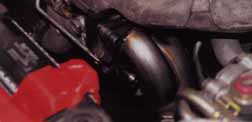
Note how the stock downpipe chokes down considerably after the cast iron collector. Keep in mind that the majority of the width shown by the stock system is heat shields the HRC piece is a true 3-in. pipe.
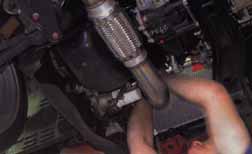
The easy part was getting the HRC pipe in part was reaching up into the tight confines of the engine compartment and bolting the pipe to the flange of the turbo.
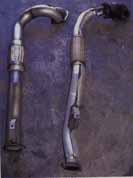
You can see why getting the pipe on was so difficult. Note there are two more bolts not visible here, HRC even tapered one bolt (under the waste gate pipe) to make getting it in a little easier, Regardless, it was a tight squeeze. With the pipe in place, changing the oil filter is also a little more difficult, but the pipe was carefully designed to give exactly enough room to get the filter out.
Attaching the new catalyst to the existing exhaust system was supposed to he straight The flange from the old system would he cut off, the new flange welded on, and the whole shebang would just belt right together It didn’t quite happen that way
Once again, we utilized the talents of the technicians at Road/Race Engineering in Huntington Beach, Calif., for the installation. Installation of the new pipe appeared to be straightforward … at first. The three-inch downpipe was a tight fit, and only after some serious grunting, groaning and a series of words unprintable here did we finally get the pipe in place. The fault didn’t lie with the downpipe itself; there just isn’t a lot of room to work in the Eclipse’s engine compartment. Installation necessitated removing all the heat shielding from around the turbo, and removing the radiator fan as well for extra clearance. The stock downpipe was extracted as one piece from the car, and was relatively simple to remove. The HRC piece, on the other hand, proved difficult. The stock cast iron collector South of the turbine is physically much smaller than the HRC piece, and does not incorporate the long external waste gate runner the HRC pipe does. As a result, getting the HRC pipe to fit required a little extra effort. HRC is aware of the tightness of the compartment, but aside from supplying a special tapered bolt to clear one of the tightest spots and some hints on getting their pipe in, there is little they can do.
The second part of the system proved to be more challenging than the first. We had to cut off a considerable length of pipe to get to the three-inch portion. This caused a cascade of problems. Note the dogleg bend in front of the resonator; this had to be custom fabricated later.
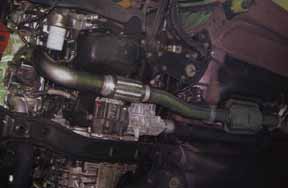
Mike Welch from Road/Race utilized a three-inch resonator to replace the one cut off in our exhaust system surgery. He also fabricated the necessary dogleg bend from spare three-inch pipe. To keep the OBDII system happy-Mike cut the oxygen sensor mount off the old exhaust and welded it onto the new one. The new system looked considerably beef ier than before. Note that although there were some tight clearances, nothing rubs against the bodywork, and the car only scrapes on very high center bumps that would give most lowered cars trouble,
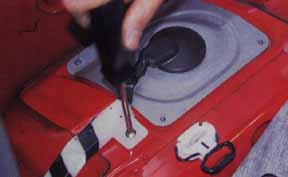
With the exhaust system in place, it-was time to replace the fuel pump and injectors. The pump was first. After the rear seat was removed, the access panel for the fuel pump was unscrewed and removed.
Attaching the new catalyst to the existing exhaust system was supposed to be straightforward. The flange from the old system would be cut off, the new flange welded on, and the whole shebang would just bolt right together. it didn’t quite happen that way. Everything seemed to be going smoothly until we realized the combined length of the HP( pipe and catalyst was too short. Once again this had little to do with the HRC ‘tern and more with the exhaust system we already had on the car The cat-back exhaust we used on the car didn’t flare out to its full 3-inch diameter until about 2 feet past the catalyst, which was where we made our cut. This extra length was too far for the HRC piece to span, eve with the long pipes on the ends of the Random Technology cat. So, we had to improvise. like any good tuner shop, Road/Race had lots of extra parts on hand. Among them was a sizable length of 3-inch steel tubing that was easily cannibalized for exhaust system duty. We also decided to add a 3-inch resonator to take the place of the one we had cut off the cat-back system (since the car is often driven long distances, a droning exhaust was the last thing we wanted). Mike Welch carefully measured the length needed and cut off the piece needed to make the system fit. Once again, we seemed to be on track until another problem reared its head.
Although the extra length of pipe and the new resonator were fine length-wise, they just weren’t lining up with the catalyst. The piece we had cut off incorporated a small dogleg bend. The bend compensated for difference of about a half inch in our modified system.
Since no amount of straining would bring the two together, Mike again came to the rescue by cleverly cutting the short length of pipe in front of the resonator. He was then able to line up the two pieces at last. Mike also cut a new hole for the stock post-cat oxygen sensor, keeping the OBDII system happy. Once the pieces were finally cut to fit, they were spot welded in place, and finally seam welded.
Despite the difficulties, the Frankenstein exhaust system looked terrific under the car. The extra welds and bends did nothing dynamically to restrict flow, and we now truly had a 3-inch “turbo-to-tip” exhaust system. The car now sports a deeper, richer exhaust note at idle that turns into a loud, angry blat at full throttle. We should point out that the exhaust does occasionally scrape, but only over high-centered clearances that would challenge almost any lowered vehicle.
The seat-of-the pants results were pretty good. Although the car didn’t need FAA certification, it certainly had better throttle response, along with better turbo spool up, which was mainly what we were looking for The differences in top-end power felt incremental at best, though, with no immediately noticeable difference at the high end of the tach. What was immediately apparent was that the system was flowing a lot more air.
How could we tell? A blast to redline on a cold day would cause the fuel cut to step in after the computer noticed the injectors hitting nearly 100 percent duty cycle. After a few of these incidents, the check engine light came on as well. Since this increased fuel and air flow didn’t seem to be accompanied by a substantial boost in high-end power, we theorized that the computer was over-fueling the car. To keep the engine safe from detonation, the computer was going dead rich, too rich to make any more power. The other hint that this could be the case was the blue faces of that followed the Eclipse in traffic raw gas smell was a little strong.
The official Mitsubishi tech manual prescribes a special tool to remove the large retaining collar that holds the fuel pump in place. Road/Race discovered another equally effective-if less elegant-way to do the same thing using much more common tools,
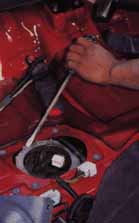
The electrical connection for the fuel pump was disconnected. In order to depressurize the fuel system, Road/Race turned on the car with the fuel pump disconnected. The car simply used up the fuel in the lines and died, They then disconnected the battery before proceeding. Even though the fuel system Was depressurized, there was still gasoline in the lines. If you are doing this procedure yourself, make sure You have something handy to catch the excess gasoline that spills out when the fuel lines are disconnected.
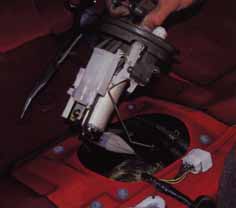
The fuel pump, float and sender all came out as one assembly. You may want to cover the open hole to the gas tank with something to prevent debris from falling in.
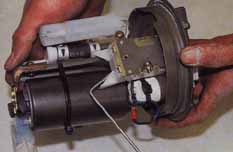
The replacement pump is physically much larger than the stock unit, and requires a lite modification of the various brackets to properly mount. Installation of the pump back into the tank is the reverse of removal.
To replace the fuel injectors, all fuel lines to the fuel rail were disconnected, the injectors were unplugged and the rail was removed. If it can be removed with all four injectors attached, all the easier for the installer. Note the ‘A’shaped retainers above the plug for each injector. These need to be ground down to fit the new injectors.
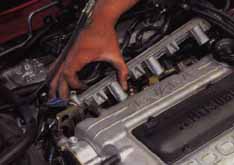
The RC’s injectors we chose flow 550 cc/min over the stock 450 cc/min (a 23 percent increase in capacity).
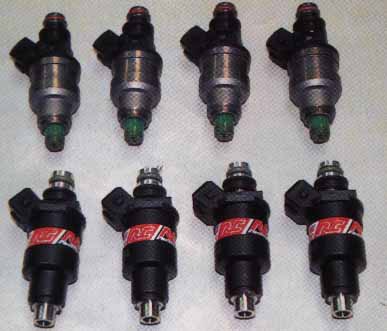
To monitor how much fuel we were giving the engine, we installed an exhaust gas temperature gauge from Apex The first step was drilling a hole for the temperature probe in the exhaust manifold. The hole should be as close as possible to the exhaust port without interfering with it. Mike actually drilled the hole in the manifold while the car was running, blowing any shavings back out the hole instead of allowing them to fall down into the turbo.
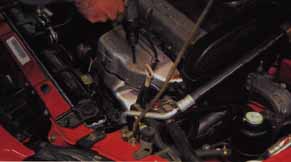
Carefully fiddling with the Apex AFC, we dialed the air flow meter input back four percent across the entire range (by simply turning each knob back four ticks). This dramatically improved power, throttle response, odor, and caused the check engine light to go back off. We were hesitant to tune any further, though, since we had no Exhaust Gas Temperature (EGT) gauge to see how our tuning was going (exhaust gas temperature is a good indicator of fuel mixture.)
Cold mornings still brought the injectors close to 100 percent, and we were eager to try more boost, so we made a call to RC Engineering in Torrance, California, for a set of new 550-cc injectors. RC Engineering is one of the best-known names in fuel injection technology. Its injectors are all flow matched so each injector in a set flows as close to the same as is possible. in an unusual twist, Russ Collins (the “RC” in “RC” Engineering) does not concentrate as much on fuel atomization as one would think. We all know what we think an injector spray should look like-a fine mist that sprays evenly from the tip of the injector. However, Russ showed us an injector equivalent to those provided for our Eclipse on his custom strobe-light-equipped spray observation station.
What we saw was surprising … no light mist, but a steady stream of fuel (well, test liquid, but you get the idea) that would shoot directly into the combustion chamber. Russ says that the atomization takes place in the turbulent environment of the combustion chamber, and that it isn’t necessary for the injector to do the job. The narrow stream is less likely to condense on the walls of the intake port, making the fuel mixture more consistent.
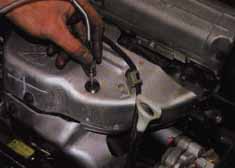
The probe simply screwed into position, with the lock nut keeping it in place.
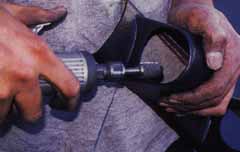
We mounted the EGT under the boost gauge in the Eclipse on the A-pillar. Road/Race supplied us with a double pillar mount to replace the single pillar mount. Like the first one, it had to be modified to fit the slightly oversized Apex gauges.
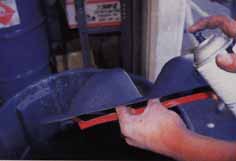
To give the piece a more stock appearance, Road/Race also painted it the factory gray of the rest of the interior.
The result was an ergonomic placement of the gauges right in line with the driver’s sight.
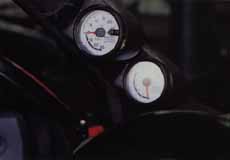
Installation of the fuel injectors was another reasonably straightforward procedure. Because it involved working with raw gasoline, it was a good idea to disconnect the battery to prevent any sparks. The entire fuel rail was removed, the new injectors were put in place, and the rail was popped on. Well, almost. Because the RC injectors have a slightly different connector location, the stock Mitsubishi rail had to be trimmed slightly. Simply a matter of grinding off some excess metal on the rail around the plug for each injector proved to be minor surgery.
With bigger injectors, the stock fuel pump would not be up to the job of providing adequate fuel pressure, so Road/Race also installed a larger Denso fuel pump.
The fuel pump was an in-tank unit, which meant removing the rear seat to get at the access hole on top of the tank. Once the pressure was relieved from the system and all hoses and connectors were removed, the large plastic ring holding the fuel pump in place was removed. The pump was removed as an assembly with the float for the fuel gauge. The pump itself was a metal cylinder about 4 in. long. The Denso replacement unit was substantially larger, and required a bit of modification to get onto the stock bracket.
With the larger injectors, the engine would automatically run way too rich, so we would have to use the AFC to dial in the fuel mixture. With this much fuel mixture fiddling, we absolutely needed an EGT gauge. So, we turned once again to Apex for an exhaust gas temperature gauge with a white face to match our boost gauge. Mike Welch of Road/Race showed us a good trick for installing the EGT probe in the exhaust manifold. To install the probe, you must drill and tap a hole in exhaust manifold. To prevent metal shavings from dropping into the manifold, and subsequently into the turbo, Mike drilled the hole while the engine was idling. This way, the exhaust blew the metal shavings out the hole and saved us a lot of worries.
As simple as this technique seems, Mike was quick to caution the inexperienced not to try it at home. it takes a great deal of finesse and practice to get the procedure down right one wrong move and a big piece of metal could fall into the turbo, with disastrous results. The safe way to do it is to remove the manifold altogether.
Once the hole for the sensor probe was drilled, it was relatively simple to route the lines to the gauge, which we mounted on the driver’s side A-pillar next to the boost gauge. mike tells us that the exhaust temperature should be 900 degrees Celsius at full throttle when everything is operating smoothly. Getting the temperature to that level involved tuning our gas flow with the Apex AFC fuel computer This procedure takes a while, and can be disastrous if done wrong. If in doubt leave it to professional tuners like those at Road/Race.
Initially we rough-tuned the car to run smoothly, and keep the exhaust conservatively cool. Tuned this way, the car made the same power it did before we did all this work. At the time we went to press, Road/Race was in the process of tuning it more precisely in the hopes of getting better power results. As we have observed before, the stock computer is getting very conservative about fuel and timing. Though you can tune this out somewhat with the AFC , you are only adjusting the air flow meter input to the computer, not adjusting the output. To really get things right, the ECU has to be re-programmed to remove the conservative fuel and timing maps. We plan to have this done, but in the mean time, we want to see exactly how well the engine can be tuned with the AFC. With the AFC tuned conservatively, the HRC downpipe and cat and the bigger injectors have only gained us responsiveness and status in the parts hanger’s club. The tuning step will be critical to making these mods worthwhile. The results of the tuning, however, will have to wait until the next installment.
Marc S – Carlsbad in July – 12.14, clutch-limited..
I’m exhausted as hell so this will be shorter than my usual novels (but
still long) :)
– Billy ran an 11.97 I believe. YES! Finally an 11, now him & I can go
home & rest for the next few weeks, we are sick of going to the track
trying to get that 11 we both knew we could run :). Major congrats!
– I got a personal best of 12.14 @ 113mph. I continued to have major
problems launching… 60-foot times were mostly 1.8’s and 1.9’s. Highest
MPH for me was 113.6 mph. Other runs included: 12.15 @113.4, 12.18 @113,
12.18 @113 (another), 12.18 @112, 12.24 @113.2. I’m confident the car
could run 11’s… All it needs is a good launch… And/or remove the
headlight… And/or take off some weight like Billy :) hehe… Or add the
ITC… Or… :) But the bottom line is now that 11’s have been done I’m
taking a rest from racing for a month or longer & when I come back likely
it’ll be with additional stuff so I don’t have to just “squeak” an 11… And
I’ve got to figure something out about this whole clutch/launching
situation… Maybe re-treads for traction… Who knows. 4 puck clutches just
don’t seem to be the way to go for launching…
– Carlsbad… Anyone who went to Pomona missed out. Anyone who did not go
racing PERIOD missed out. There were 40 cars total at Carlsbad. I got
*16* runs in when I finally “had my fill”… Coulda kept going and probably
had 20+ runs! That’s 16 runs in about 2.5 hours time (2pm to 4:30pm).
Pretty insane! There were never more than 4-8 cars in front of you in
line! Weather was warm but the air wasn’t too hot unlike Pomona last week.
– DSM’s @ Carlsbad… Well, we just had our “West Coast Shootout” :).
Nearly 1 out of every 4 cars there was a DSM! We had about 9 cars (one
DSM wasn’t a Club DSM’er). With 4 of us running 12’s and 3 of us running
really low 12’s (and an 11!) we dominated and kicked muscle-car a$$. The
good ol’ boys were commenting how we were mopping up. I really enjoyed
killing some of the big loud big block slick wearing and super-charger
breathin’ brutes :)… We popped a lot of ego’s today :)
– We had an awesome drive after leaving the track with 7 DSM’s… The road
was 3 lanes wide, so we had 2 rows of 3 DSM’s (With Steve H. in the rear
trying to snap a picture)… Felt like I was in a fighter plane formation :)
– Personal thanks go out to Scot Gray & Henry S. Scot let me borrow his
BFG TA R1’s to try to get more traction (couldn’t get them heated up enough
w/ drag racing so they weren’t as grippy as we were hoping) and Scot and
Henry were both a killer pit crew changing the tires back & forth :).
– On a final note… Damn DSM’s are built tough :)… In the past week I
have put *27* 12 second passes on this car, mostly low 12’s, without a
glitch (knock on wood). Mike Ferrara wouldn’t like it! :)
Hope you all had a good 4th.
-Marc
Marc S – Pomona in June – Awful new clutch, but 12.16 / 114mph
The good:
– The Pomona guys said it was the smallest turnout all year. We averaged
a run per hour for the first few hours, and then around 2:40pm it started
to become “run as often as you want”… You just ran & got back in line
again (with between 16 – 40 other cars!) So we ended up paying under a
dollar per run if ya don’t count the race gas :)
– Scott Terrace ran some awesome times, especially with his very short
list of mods… 13.3’s! This is right up there with those ol’ East Coast
stories of putting under $1000 into a DSM & being at low 13’s… Scott is
going for 12’s soon on the ultimate budget car!
– Bryan actually showed this time (hehe) and broke 13’s on his 14B car!
Yeeha!
– Had a first-timer come (I just know I’m gonna spell this wrong…
“Shino?”) and do awesome! Shino has a 2G FWD with limited mods and by his
3rd launch he had pulled a 2.3 60-foot time! He later pulled at least 2
2.2 60-foot times! (1/4 mi time was 14.6 I believe). Fantastic times for
a FWD & a first time at the track. Congrats!
– I had a new personal best & my MPH increased substantially.
The bad:
– Most of my times! Yeah, I know these times are faster than most, but
honestly the car has more in it so considering I started the day at a 12.19
@ 114.3 w/ a 1.857 60 foot time, the day was very disappointing for me.
The ugly:
– My 60-foot times were horrid. I could not launch the car worth a damn
with the new clutch. I wanted to rip that thing out and torch it. Even
with *11* runs (towards the end I was trying ANYTHING to see if I could
figure out a method to launch) I couldn’t do jack on my launches… Here are
some of the timeslips, then I’ll mention the “why”…
12.16 @ 114.5, 1.807 60-foot time
12.19 @ 114.3, 1.857 60-foot time
12.19 @ 114, 1.763 60-foot time (hit rev limiter bad on 1-2 shift)
12.32 @ 113.5, 1.897 60-foot time
12.32 @ 113.2, 1.922 60-foot time
12.34 @ 114, 1.895 60-foot time
12.40 @ 114.4, 1.972 60-foot time
Other 60 foot times included: 2.071, 1.971, 2.036, 2.254.
The day started off exciting… We knew on the first run that the engine was
11-second capable. Had the MPH, just needed a good launch… If I coulda
had a 1.71 60 foot time on that 12.19/1.857 run, the 12.32/1.922 run,
etc… Coulda grabbed an 11.9x. We all knew it and as the day went on I
was really really frustrated at not being able to improve the launch.
Here’s what was happening in-car:
I’d take the engine to various rpm, usually no less than 4500, and then
when it was time to launch I’d start stepping on the gas and then start
releasing the clutch. No matter how fast or slow I seemed to release the
clutch pedal, within the first few feet of launching, suddenly I’d hear
loud bangin’ noises coming from all 4 tires. The car ran *perfectly*
straight off the line and down the track, was not squirmy in any way. So
what did I figure? I thought I had wheel hop… That the tires were right
on the border of hooking up/not hooking up and were going back and forth
between the two, hence the physical banging I was feeling/hearing. (Every
launch now activated my windshield washers, too, so it seemed like I was
getting decent traction).
So stupid me, I spent almost all my runs trying to get the wheels spinning
a little more… I raised the RPM level of my launches, tried slipping the
clutch even more (it doesn’t like to slip at all), etc. I didn’t want to
be on the edge of traction… I wanted to have my wheels spinning more
cleanly for a little off the line, and then have them hook up solid… This
is how I got my low 1.7’s before, because the car still accelerates strong
with the spinning, and you don’t bog your engine. Most of the runs
Saturday I’d hit the rev limiter on the 1-2 shift too… Suddenly it would
jump to 7200 on my tach (my tach reads 300 rpm low) and there would be no
time to shift to 2nd before the limiter hit…
Realization of what was happening didn’t come until the 9th friggin run…
(I was kinda out of it the whole day from getting 3 hours max of sleep). I
can’t remember exactly how it happened but I mentioned to someone how I hit
my rev limiter at the 1-2 shift at my last run, and they responded “yeah,
you were in that rev limiter for a while”… (And I was thinking “that’s
odd, when rev limiter hits before I can shift, it’s usually pretty quick).
The spectator describes how my engine sounds *off the line* before I even
got to shift… Brah-brah-brah-brah (stutter stutter stutter). Ronnie comes
by & he confirms the prob… I was riding the rev-limiter throughout the
launch! It was impossible to hear the rev-limiter with helmet on, windows
closed, and big loud sounds coming from all 4 tires… Yeah, you could call
it wheel hop, but not because I was on the verge of traction… It was
because the engine was making so much power it was just annihilating all 4
tires and instantly going to rev limiter the whole way through 1st… As the
rev limiter hit, the wheels would go back & forth between gaining a touch
of traction & losing it again. The wheels were all spinning so evenly that
the car never felt squirmy in any way and simply stayed straight…
So yeah, I was running low 12’s with riding the rev limiter throughout
first gear. Engine made lots of power, clutch grabbed hard, tires couldn’t
hack it in any way. Plain & simple. Nice to know the why, but there
wasn’t anything I could do to go faster… Just couldn’t get any traction
with such a harsh clutch. The clutch did its job of holding the power. It
just did it too well! End of story.
I am gonna see about getting my rev limiter raised to 8000, perhaps that
will help a little… Now I know how a FWD’er with a built engine and no
slicks feels. I honestly think though that if I had my “old” clutch in the
car (before it blew a spring), 11’s coulda been mine :). Time to invest in
some tires.
Which leads us to today (Sunday)-
Billy- Kick some butt and bring us that 11-sec time slip we’ve been waiting
for… Our cars are definitely good for it. As long as you didn’t get my
type of clutch installed last night you will do just fine :)-. Good luck
to Josh too!
Marc S – Carlsbad in June – 12.20, but bye-bye clutch
Lots of mixed Carlsbad news… This will be lengthy.
Twas a very hot day which sucked for getting good times… On the positive
side it wasn’t too crowded, I got 5 runs in between 2pm and 4:15pm before
my car called it quits :(.
Run 1. First run had me really, really worried. 12.75 @ 105, w/ a 1.77 60
foot time. The car was hot & one or two of my shifts wasn’t quite as fast
as usual but that time was really off!… Checked peak EGT… 810 degrees…
Ok, running too rich. Leaned things out a couple notches.
Run 2. 12.34 @ 110. Phew, getting better, new personal best. 1.71 60
foot time. MPH still has me worried though. Was already getting 110 at
Pomona, before the cams, and the cams definitely have the car pulling
harder. Checked EGT’s… Still low. Leaned things out a touch more.
Run 3. Off to a decent start. 1.75 60 foot time, 7.89 ET in the 1.8th,
and 1/8 mph is almost 1 MPH higher than Run 2… Go to shift from 3rd to
4th… I don’t think I had my clutch pedal in all the way in time as I jam
it to 4th… But the *shifter* goes into 4th anyways but feels like it has
no weight when it gets there. Step on the gas but I’m not in gear, the
engine just revs. No 4th gear. For that matter, no any gear, the shifter
moves into all the gears with almost no resistance & I’m “in neutral”.
$h!t. Now I’ve done it! I coast through the 1/4mi – 12.98 @ 85mph!
What a run that woulda been if I had 4th gear :) My MPH in the 1/4 was
less than my MPH in the 1/8 and it was still a 12 :). I come to a stop at
the entrance to the return road (end of the strip), put on the hazards, but
the lazy Carlsbad officials just stare at me… So I think about it as I
move the shifter around… Ok, no resistance at all, & always in neutral…
Almost as if… The shifter ain’t attached to the cable no more! I yank
the plastic panel off under the shifter & look down there… Yep! The
cable came off. (It lost the cotter pin). I put it back on, get it in
gear & am on my way. Later I rigged a new pin by bending a key ring…
Problem solved.
Run 3 gives me time to think… Why are my EGT’s still so low, and what’s up
with the MPH (1/4 MPH for Run 3 was unusable but 1/8mph showed very minor
gains)… Then it dawns on me… My boost is low. Never raised it on the
way to Carlsbad. I had set it late the night before when the air was very
cold. I was probably running 18-19psi in the heat!… Up the boost a
touch… Time for run 4…
Run 4. Got a decent launch, but had a bog problem which to be honest
plagued me on all the runs… I’d get off the line quick w/ spinning tires
but would then hook up early, have a quick bog, and then take off. This
likely affected all my times that day. Gotta do some tuning, the cams
changed a lot of things. 1.73 60 foot time. 1/8th: 7.78 @ 88.35. 1/4
mi: *12.20* @ 109! I’m excited about the ET but still puzzled about the
MPH. For comparison, I ran 86-88mph in the 1/8th at Pomona in my 12.4 –
12.5 runs & always 110mph in the 1/4. I up the boost a little more (it was
probably still a little low, 19-20) & lean things out a little more in
preparation for Run 5. Looks like I will get several more runs in so I
have time to tune in small increments.
Run 5… Disaster strikes. The run was bad from the very start. For the
first time, my less-than-happy-to-disengage-when-hot clutch has a very
noticeable impact at the track. I try to shift to 2nd & it doesn’t wanna
go in. Wait for it to drop in (the run is totally blown now) and I
continue on… The rest of the shifts ain’t feeling too good. Cross the 1/4
at 13.3/107.5 & the shifter doesn’t wanna come out of gear. I manage to
get it out & am barely able to force it into a lower gear to get back to
the pits. Park the car, figure I’ll let it cool down while I grab lunch &
hope it’ll get back to normal like it usually does once it cools.
No dice this time. I go start up the car. With the clutch pedal pressed
to the floor & feeling “normal”, the shifter will NOT go into ANY gear no
matter how hard I press. Shut off the engine & it will go into the gears
but no chance while it’s idling. I put it into gear while the engine was
off & THEN started the car with the clutch pedal fully to the floor… Sure
enough, the car starts moving immediately as if my foot is barely on the
clutch pedal. Can’t get the thing to disengage at all.
Thank god Corey Dennen showed up today :)… Felt great not to be stuck
there alone! After finding out how insanely expensive it
would be to flatbed the car back to RRE, we decide to try to drive it there
by starting the car up in gear. My poor starter motor :) but yeah the
starter gets the car moving, and I make it out of the track w/o the ability
to disengage my clutch :). Stops were an absolute hell as I tried to gas
the engine to make it slip the clutch, while keeping my foot on the brake
to stop the car, & keeping the clutch in to at least slightly disengage it.
Got to hear lots of scary noises coming from the engine compartment. :)
Fortunately this only occurred a few times. We got more & more ambitious
(started in 1st at the beginning, then started in 2nd ’cause driving slow in
1st was unbearable, and finally said what the hell, started it from 3rd
gear & got on the freeway). Corey drove his car & escorted me the whole
way to RRE. Thank god there was little traffic & it was practically a
normal drive… 70mph/5500rpm in 3rd gear the whole way there :). Dropped
the car off at RRE, & Corey dropped me off at my home some 40+ minutes
away… I owe Corey big time! Corey, thanks for being there for me!
That’s pretty much the tale, time will tell what the culprit was. One thing
seems pretty certain- this was just the end result of a problem that’s been
plaguing me since having the clutch first installed. I’m very interested
in finding out the “why”… If the problem is specific to the Clutch Masters
clutch, they’re soon going to find that there aren’t any DSM’ers left who will
run one of their clutches– so many people have switched to ACT already &
have been telling me to do the same.
Performance notes… 12.20 was nice, I think the car is 12.0x capable
though. I have confidence that these cams added nice horsepower.
Considering they were installed less than 24 hours ago with 1 minute of AFC
tuning, I think there’s some serious AFC tuning work to be done to get the
car running more optimally. That, combined with more boost (21-23) & some
real gas instead of 100ish octane should hopefully shave a couple tenths
off. Time will tell. For now I’ll worry about having an operational car
:).
On the bright side… Those low 12 second runs really had people talking
about DSM’s at Carlsbad & admittedly it’s nice to get the attention :)…
Lots of people coming by to ask what the hell was done to the car & to
offer their congrats. It was great overhearing a conversation some guys
were having- “Did you see that? 12.2! I’m not talkin 12.6 or something…
This was a 12.2! He was just GONE!” :)- Some Mustang guys were
actually belittling how slow their cars were in comparison – wish I coulda
got that on video tape. Ok, “big-head” mode off. Thanks to Scot G for
making those Club DSM cards a few months back. There was a modded turbo
DSM guy there in need of the right parts/advice who didn’t know about Club
DSM/Socal DSM. The card came in very handy! I sent him Mike’s way since
as we all know, Mike @ RRE has too much free time on his hands & needs more
customers to bug him. :)
Sorry for the rambling… Am tired/drained & not looking forward to the
rental car expenses/inconvenience. But, it coulda been a lot worse so I’m
kind of thankful.
Oh, that reminds me… Here’s a good piece of info I hope you never have to
use- a good Carlsbad towing service. I fortunately didn’t have to get
towed, and it was the cost of towing that had us looking for every possible
alternative- Between $2-$8 per mile! AAA basic membership only has 7 free
miles! Call La Costa Towing – 760-730-0348. They normally charge
$35/hookup + $2 mile, but they said they’d give me a deal & charge me $150
complete to flatbed the car all the way to RRE/Huntington Beach. May be a
good chunk of change but that’s a good deal given the usual rates.
Hope everyone did well & stayed in 1 piece at Buttonwillow.
G’nite,
Marc
Marc S – Pomona in May: 110mph and Sub 12.5’s
Had a great time yesterday! Sorry that more people couldn’t make it…
Pomona: The Viper club had its own class… It was a blast watching those
things run… Some of the modified ones were insanely fast & clicked off mid
to low 10’s. Quite a few Vipers ran high 12’s and very low 13’s though.
An Impala SS club showed up too… About 15+ Impala SS’s, ALL with the same
rims and either black or very dark brown paint. They all had little “SoCal
SS” stickers on their windows, many of them w/ a web address… They were
the local chapter of a national club, just like us… Gotta love it. Unlike
us though they get great turnout at these events. There were only *4*
SoCal DSM’s that ran at the track (a 5th showed but didn’t run).
My track times… I ran a 12.40 @ 110 mph. 4 runs total, the slowest was
12.52 @ 109.1. This is on a 16G, stock 2G motor/2G head, and a lot of
great work & advice from Road Race Engineering. (Thanks RRE!)
On the way over to the BBQ, me & JR spanked some obnoxious NOS Civic that
dared to have big writing on the back that said “Bow down to those who are
faster than you!” (or “Bow down to this car” or something like that)… Hehe
I kinda got separated from the caravan I was following (JR, Scott T, Jeff T
& gf) to the BBQ ’cause I had to teach that Honda a lesson :)… (Thanks
everyone for waiting for me to catch up!) This was after I said right
after we left the track “let’s drive slow & also be sure not to step on the
gas since we’re running pump gas now & the ECU still thinks we have race
gas”… Ah well!
BBQ was cool, thanks John! I suggest everyone brings sunglasses next time,
either that or someone has to pry the digital camera out of Dani’s hands so
we don’t get nailed by the flash! 1 beer for Dani is 1 beer too many! :)
Nice seeing everyone, looking forward to the next event.
-Marc
Marc S – Mid 12’s! (Carlsbad, March 1998)
Yesterday at Carlsbad was a really awesome experience for me. Got some
great runs in & had some funny encounters with the Carlsbad folk/rednecks.
Carlsbad highlights for me:
First, I wanted to see if I could run in the far right lane, the one with
the short line & all the big bad-a$$ V8 trailer-queen cars that get
preferential treatment. I knew the response I’d get if I just drove into
it & asked the official if I could run there, so I walked up to him first
(so he couldn’t see I was an “import driver”) and said “This lane’s just
for those who run 12’s and faster, right?”… He said “Yep”… So I said
thanks, went back & got in the fast lane with my DSM :). A few people
looked at me funny (it must seem strange seeing a nearly bone-stock looking
DSM with a quiet exhaust driving up the fast lane) and I felt a bit nervous
& wondered if I’d get kicked… So I’m almost to the staging lanes & the
beer-bellied track official comes up to me and says “Hey, do you know what
you run?” and I said “Yep. 12’s!” and he looked at me funny, wanted to
argue, but couldn’t say anything… So he let me run. :) (Fortunately it
was a 12). So, if this isn’t great motivation for everyone to put on more
mods and hit a 12, what is? You can run in the elite V8 lane and tick off
the Carlsbad rednecks too! :)
One of the guys I raced had a built El Camino or something… I ran a 12.6
to his 12.8 and also had a much better reaction time which made it look
like I was even more ahead… He parked behind me in the lanes afterwards
and we had a great conversation… “What the hell do you have in there?”
(2 liter 4 banger). “Well how much does that little thing weigh?”
(3300+ lbs). (Pause/confusion, expected a much lighter weight, not
understanding this isn’t a Honda he’s dealing with). “JEE-SUHSSS! I saw
you jump ahead of me off the line and I’m thinkin ‘that’s a quick car but
now I’ll catch him and fly right by him… And you just kept going and I’m
saying ‘$h!t! I can’t catch this guy! What the hell?'”
The absolute highlight of the day was after making my 4th run and getting
in line for my next run, two of the Carlsbad officials walked back all
excited and started talking to me… “What the hell do you have in
there! Holy $h!t your car runs fast! We couldn’t believe how fast
you got off the line! You’re running nitrous, right?” (Then they
freaked when I said no & showed them the pretty stock looking engine
compartment). “Yeah we’ve been watching you race all day, the guy starting
the lights was commenting ‘Damn that car can go!’. Hey, what are you
doing tomorrow? You gotta come back tomorrow and race in the real races!
You could win $300!” (The emphasis on $300 made it sound like a year’s
salary). :)- Jokes aside though, several of the Carlsbad officials I
spoke to were very friendly to me & others w/ imports, irrespective of our
timeslips.
Here’s my run’s-
Run 1
1.811 60-ft, 5.257 330-ft, 1/8: 8.150 @ 83.80, 1/4 mi: 12.773 @ 103.85
mph
Beat my previous best 1/4 (12.85 @ 106mph) by a tenth, but mph’s were down
by 2
Run 2
1.743 60-ft, 5.134 330-ft, 1/8: 8.013 @ 85.78, 1/4 mi: 12.642 (mph not
shown)
With that 60 foot time, I figured for sure that would be my fastest run for
the day. MPH were back up in the 1/8th but the left lane which I was
running in wasn’t reporting mph in the 1/4 for most of the day.
Run 3
1.777 60-ft, 5.230 330-ft, 1/8: 8.092 @ 85.59, 1/4 mi: 12.755 @ 103.66
mph
Another 1.7, but not as good a run as the last one. Mph’s are way too low
and I noticed that when I shift from 3rd to 4th, it’s not pulling as hard
as it should. Though I’m running mostly 100 octane unleaded, I decide to
actually *lower* my boost for the next run to see if it will have an impact
on my MPH.
Run 4
1.735 60-ft, 5.175 330-ft, 1/8: 8.031 @ 86.60, 1/4 mi: 12.618 @ 107.1 mph
Another low 1.7 60-foot, and my MPH’s have increased substantially.
Apparently lowering the boost helped.
Run 5
1.718! 60-ft, 5.126 330-ft, 1/8: 7.958 @ 87.36, 1/4 mi: 12.525 @ 106.79
mph
Great way to end the day… Almost broke a 1.6 60 foot time (On worn-out
225/50 BFG Comp TA ZR’s). Dropped into the 7’s in the 1/8, and dropped
another full tenth off my 1/4 mile. I was working on a better 2-3 and 3-4
shift for Run 4 & Run 5 & I think it helped. I concentrated on keeping my
foot on the gas during the shift, and while in both runs I still ended up
letting off on the throttle somewhat, I kept my foot into the gas at least
part way & just jammed the shifter into gear. Surprisingly, it dropped
nicely in there w/o a fuss or a grind.
Misc notes on the runs:
I usually launch around 4000-4400rpm and drop the clutch fairly quickly
(but not a complete “drop”). In my first run it netted a low 1.8 and I had
pretty good traction. In the next run, I brought the rpm up a little
higher (4500-4600) and dropped the clutch even quicker. I got major wheel
spin on all 4’s and I think a bit of wheel hop (loud thumping noise coming
from the rear). I figured for sure that it was gonna be a crappy run, but
when I got the timeslip I had a 1.7… I continued with that method for the
rest of the day and ran consistent 1.7’s… My conclusion is that some
wheelspin on an AWD is a *good* thing. You’d think it means lost
acceleration but apparently it’s still moving you forward quite well and by
keeping the revs of the engine up due to wheelspin you stay in a stronger
power band.
Less extreme boost = better mph/ET (for me)… I had actually heard this
from another fast 2G owner & didn’t believe it at the time… I was probably
running 22-23psi initially, and I lowered that & ran better. (For me, the
16G can’t sustain 20psi past 6300rpm no matter what, but below 6300 it’s
possible). I’m assuming the higher boost is causing ignition retard, but I
don’t know if it’s because the ECU is detecting knock, or if the ECU just
doesn’t like so much air flow and is out of range…
Anyways, it was a fantastic day. Great seeing everyone again, thanks for
sharing it with me. Thanks also for putting up with all my enthusiasm
about my runs… Claim Jumpers was cool, other than Dani head
butting/attacking me every few minutes. (Grin). Some day we’ll learn to
harness her near-limitless supply of energy and we’ll power a DSM into the
9’s :)-
-Marc
Marc S – Into the high 12’s! (Carlsbad, January)
Hi all,
The Carlsbad event was great! Ok, the track is neither well-run nor
well-maintained, but the company was great & I really enjoyed the runs I
got in.
– Caravanning down from RRE was cool. About 9 cars. We managed to stay
together pretty well & kept it around 80mph. It sure was fun watching how
people looked at us & listening to the comments when we were at the gas
station. Hey, anyone up for practicing formations? We could have double
and triple lines, diamond formations (how fitting), etc! (Grin) Regarding
racing around for the last couple miles… Heyyyy I just wanted to make sure
my boost was set right :)
– Once our 8-9 cars made it there, our numbers were around 15+ cars & 30
people.
– Timeslips… I hit the 12’s! (Yahooo!) I ran a 12.86 @ 105.04 and
then a 12.85 @ 106 (best). This was the first time I was traction limited
with an AWD… I was spinning all 4 tires off the line & through much of
1st. Some of that was most likely from having dirt/mud on the tires (good
ol’ Carlsbad). I think I can knock a couple more tenths off with a combo
of a better launch (I was doing 1.8 60-footers) and by leaning the fuel out
more. With race gas, temps never got past 860 degrees Celcius, & I woulda
liked to be near 900 as I crossed the 1/4 mile line.
– BBQ… Very very nice! Mike Cornwell is the man when it comes to BBQ!
(He’s just a lamer when it comes to spelling my first name… You wonder why
I keep my last name as an “S”? So Mike can spell it!) :) The food was
great & it was cool to kick back with everyone and watch race footage.
The Carlsbad meet really woke up my racing bug… I gotta get back to the
track for more timeslips… Anyone interested in heading up to LACR in a
couple weeks?
-Marc
Marc S – Ferrari 355 War Story
I’ve seen a lot of Ferrari 355’s around (I live in Southern California),
but have never been able to get one to race me. Until a few nights ago!
It was around 2am, I had been driving for an hour on a relatively cool
night (low 60’s). As I near my house, I see the very low, very wide
silhouette of a F355, plus a car up ahead of him with lights on top.
The Ferrari driver is driving pretty slow, maybe 40mph. I figure there’s
no chance for a race here; it’s probably a cop up ahead, and if it
isn’t, this guy is probably the typical ultra-conservative Ferrari
driver judging by how fast he’s going. Not that I was entertaining
any thoughts about beating the Ferrari! I have a 95 GSX with a stock
T25 turbo. My mods are a complete exhaust system from the turbo back,
an upper I/C pipe w/ 94 BOV, manual boost control, a RSA FR2 filter,
and no MAF honeycombs. My best 1/4 mi run to date is a 13.65 with a
1.78 60 foot time, and much slower w/o a good launch (14.0x’s with a
2.0 60 foot time.)
Luck was with me though. The car up ahead turned out to be a
rent-a-cop, and he turned off at the very next street, leaving the
two of us alone on a long deserted road. I get next to the Ferrari
(and am very obvious about it) and look over at him to try and initiate
a race.
No dice, he stares straight ahead.
Ok, only one other thing to do. I floor it and quickly get a few
hundred feet in front of him, then tap my brakes and wait for him to catch
up, daring him to take the bait. (Not that I expected him to; this is
the third F355 I’ve tried to race in such a manner).
Suddenly I hear a WWRRRAAAAAAAAAAHHH and from my rear view mirror I
watch him rocket forward. I think to myself “awesome, but now I get
to really have my face rubbed in the dirt; I’m not going to floor it
until we’re side by side, and he’ll probably just continue right by
me with his gas pedal slammed to the floor”. (It’s always so hard
to get initial timing right with a stranger in a street race, ya
know?) :).
Good luck strikes again! The guy plays fair, and brakes once he
catches up next to me. We’re side by side. I’m thinking “well,
my intercooler is probably still reasonably cool, the cool air
helps me even more than it helps him, but we’re at 35mph, I’ve lost my
AWD advantage, and he’s got 380 horsepower!! Here goes nothing,
but damn this is gonna be fun!”
We floor it. My turbo spools up almost instantly (the one nice thing
about a T25) and I rocket forward in second gear. I pull a little less
than a half a car length on him. We’re accelerating almost at a dead
heat, he’s pulling maybe a foot or two. I shift to third, it’s still
very close but he’s pulling a little more now. We go from being side-to-
side to him slowly edging out in front of me.
Ok, timeout for a comment here regarding Ferrari’s… I have a complete
3″ exhaust, my windows are all closed, and as we’re racing, I can clearly
hear his engine over mine. And a good thing it is, too! What a glorious
sound! It was almost like something out of a Formula One race. I don’t
care if you drive a 12 second car or a 19 second truck, if you can convince
a Ferrari driver to gun his engine and/or accelerate, DO IT, the engine
note is absolute music to your ears.
Back to the race. So, now that I’m in third, I realize we won’t be side
by side for much longer.. The stock T25 put up a good show, but now as
the revs increase, the boost is starting to drop, and I don’t have a good
acceleration gear left to me.. Sure enough, towards the top of third
(for me), he starts pulling more in front. By the end of third, right as
I’m about to go to 4th, he brakes. His rear bumper was a few feet in
front of my front bumper before the braking occurred. I slow down as
well and roll down my windows, but he’s either slightly embarrassed or
just being a typical Ferrari driver and won’t look over at me. Ah well.
I accelerate moderately so I can get in front of him, stick my arm
out the window and wave to him to thank him for a great race, and make a
u-turn at the next intersection to get back to my home (which I passed a
half mile back).
We raced from around 35mph to 90mph and he was barely ahead. It was
the most victorious defeat I’ve ever had and I’ll never forget the
sound of that 5-valve per cylinder Italian V8 singing its song as it
climbed through the revs. To be honest I was really surprised the
race was even that close considering AWD’s race best from a stop.
(Oh, I better say this in advance before some putz says “How can you
even think to compare a F355 to a DSM?”: This post ain’t a comparison
of the cars or a judgment on what you are getting for your money.
It’s just a war story, nothing more, nothing less.)
-Marc S

